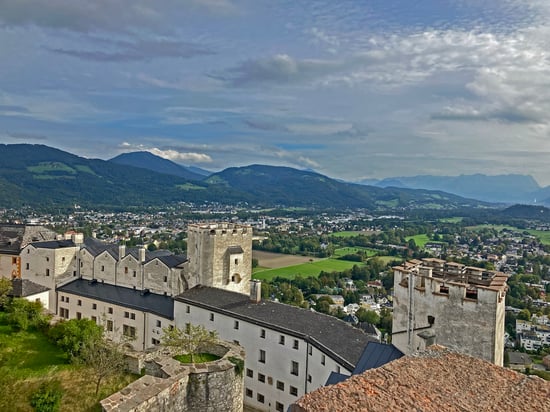
Munich • München
So you're planning a trip to Munich? Dive into our comprehensive Munich travel guide covering everything you need to know about Bavaria's capital and the must-do experiences awaiting you.
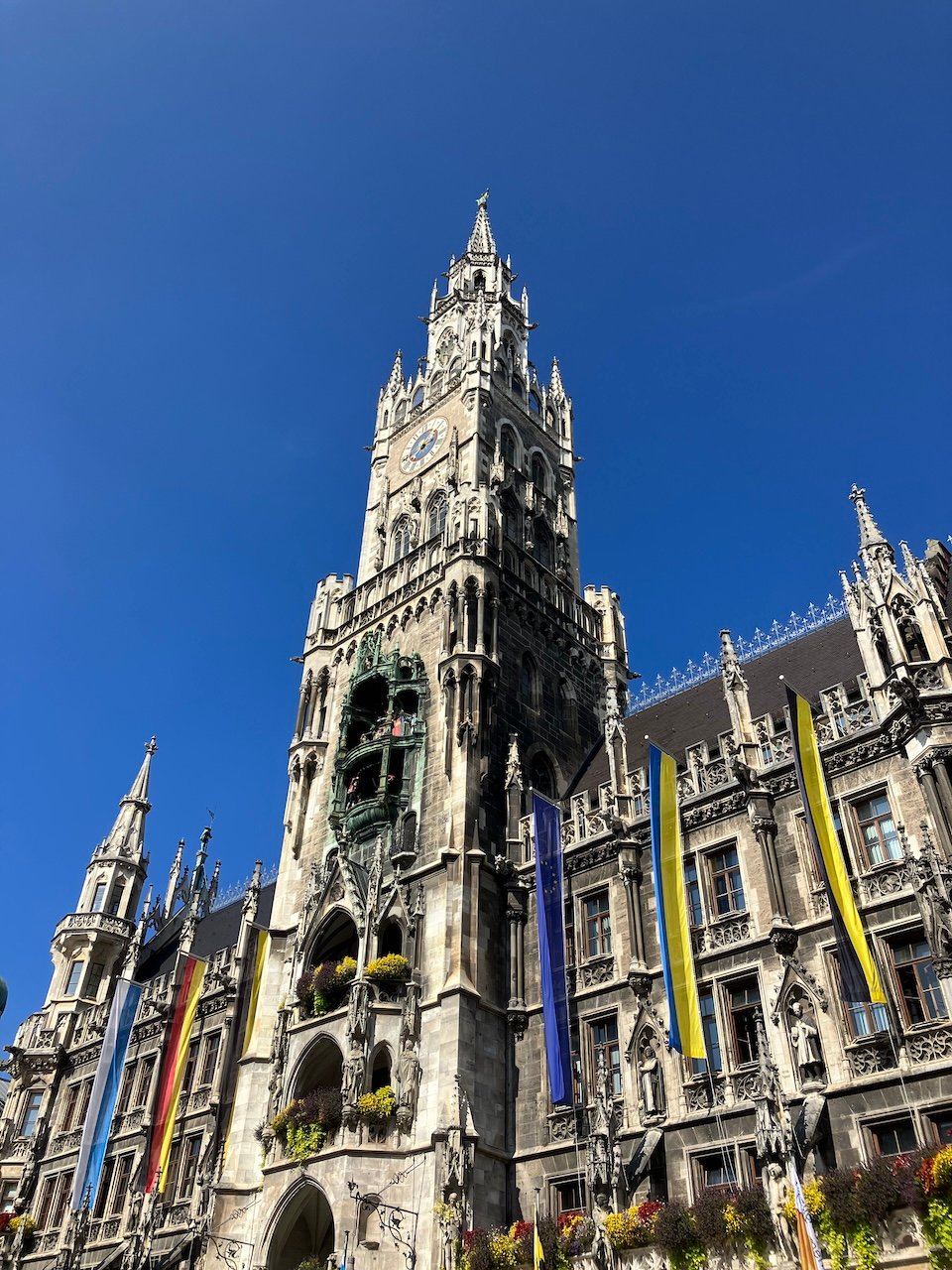


Munich Travel Guide
An Introduction
Munich, the historic capital of Bavaria, Germany, presents a captivating fusion of centuries-old tradition and modernity. Established in the 12th century, Munich's origins trace back to a settlement by Benedictine monks near the Isar River. Over time, it evolved into a flourishing city and the cultural epicenter of southern Germany.
During the Renaissance, Munich flourished under the governance of Duke Wilhelm V. This period saw the construction of iconic Munich landmarks, including the famed Hofbräu Brewery, St. Michael's Church, and the expansion of the Munich Residenz - a majestic palace that reflects the opulence of Bavarian rulers.
In more recent history, Munich has emerged as a dynamic and thriving metropolis, blending its rich heritage with modern innovations and global influences. Following the devastation of World War II, Munich underwent a period of reconstruction that not only restored its historic landmarks but also revitalized its economy and cultural scene. The city became a hub for technology and innovation, with companies like BMW and Siemens establishing their headquarters here, contributing significantly to Munich's economic prosperity.
In Munich, the past and present meld together perfectly, showcased by its neighborhoods. Take Maxvorstadt, for instance, where art thrives, or the lively Marienplatz in Altstadt (Old Town), a place where the charm of ancient Gothic buildings coexists with the modern appeal of chic boutiques and cozy cafes.
Art and culture thrive in Munich, with world-class museums such as the Alte Pinakothek showcasing masterpieces by renowned artists like Albrecht Dürer and Peter Paul Rubens. The city's annual Oktoberfest celebration, dating back to 1810, continues to draw millions of visitors to revel in Bavarian Trachten, traditional food, live music, and beers.
Whether strolling through the English Garden, exploring historic sites like the Nymphenburg Palace, or indulging in a stein of beer at a traditional beer garden, Munich promises a journey filled with history, culture, and modern allure. To help you get ready to be captivated by the spirit of this incredible city, here are some other interesting facts about Munich.
- The city's name, München, is derived from the Old High German term "Munichen," which means "of monks", or "by the monks," highlighting the Benedictine monastery established in the area in the 8th century AD.
- Munich's Englischer Garten (English Garden) is one of the world's largest inner-city parks, even bigger than Central Park in New York City. It offers beautiful landscapes, walking paths, beer gardens, and even a surfing spot called the Eisbachwelle.
- The first Oktoberfest was held in Munich in 1810 to celebrate the wedding of Crown Prince Ludwig (later King Ludwig I) and Princess Therese of Saxony-Hildburghausen. The festivities were so popular that it became an annual event and evolved into the modern-day Oktoberfest, known for its beer tents and Bavarian traditions.
- Munich's Christmas markets, known as "Christkindlmarkts," date back to the 14th century, making them some of the oldest and most traditional markets in Europe. These enchanting markets, with their festive decorations, twinkling lights, and aromatic mulled wine, have been delighting locals and visitors alike for centuries, embodying the spirit of Christmas in the heart of Bavaria.
Munich Travel Guide: Quick Tips
Munich Travel Guide: Can't Miss Attractions
Embark on a captivating journey of Munich's iconic landmarks, from the cultural marvels of the Alte Pinakothek, to the lively Marienplatz, the splendid Nymphenburg Palace, the vibrant Viktualienmarkt, and a plethora of other enchanting sites that together capture the allure of this historic Bavarian capital.
We've highlighted all the attractions we visited and adored with the universal symbol of love, ♡.
- Marienplatz: ♡ Marienplatz is Munich's central square and a focal point of the city's Altstadt (Old Town). It is renowned for its stunning architecture, including the Gothic-style New Town Hall with its famous Glockenspiel, which delights visitors with its mechanical figurines and chiming bells several times a day.
- Munich Residenz: ♡ The Munich Residenz is a grand palace complex in the heart of Munich, once the royal seat of the Bavarian monarchs. It showcases a magnificent array of architectural styles, from Renaissance to Baroque, and features opulent rooms such as the Antiquarium and the Throne Room, along with beautiful gardens and courtyards.
- Alte Pinakothek: ♡ The Alte Pinakothek is one of Munich's most renowned art museums, housing an extensive collection of European paintings from the 14th to the 18th centuries. It boasts masterpieces by artists such as Albrecht Dürer, Rembrandt, Rubens, and Leonardo da Vinci, making it a must-visit destination for art enthusiasts.
-
Schloss Nymphenburg (Nymphenburg Palace): ♡ Schloss Nymphenburg is a magnificent Baroque palace that served as the summer residence for the Bavarian monarchs. Built in the 17th century, it boasts stunning gardens, opulent interiors, and impressive architecture, including the famous Great Hall and King Ludwig I's Gallery of Beauties.
-
BMW Museum & BMW Welt: ♡ The BMW Museum in Munich offers a journey through the brand's history with vintage cars and interactive exhibits, while BMW Welt serves as a modern customer center and showcases the latest BMW models, providing a comprehensive experience for automotive enthusiasts.
- Frauenkirche: The Frauenkirche, or Cathedral of Our Dear Lady, is a prominent landmark in Munich known for its distinctive twin towers that dominate the city's skyline. Built in the Gothic style, it has been a symbol of Munich for centuries and is renowned for its cavernous interior.
- Viktualienmarkt: Viktualienmarkt is Munich's famous open-air market, offering a vibrant array of fresh produce, specialty foods, flowers, and local delicacies. Located in the city center, it has been a bustling hub of culinary delights since 1807, attracting both locals and tourists who come to savor the flavors of Bavaria and explore the market's lively atmosphere filled with food stalls, beer gardens, and traditional crafts.
- Oktoberfest: ♡ Oktoberfest is the world's largest beer festival held annually in Munich. It celebrates Bavarian culture with lively music, traditional food such as bratwurst and pretzels, and of course, specially brewed beers served in large steins, attracting millions of visitors from around the globe.
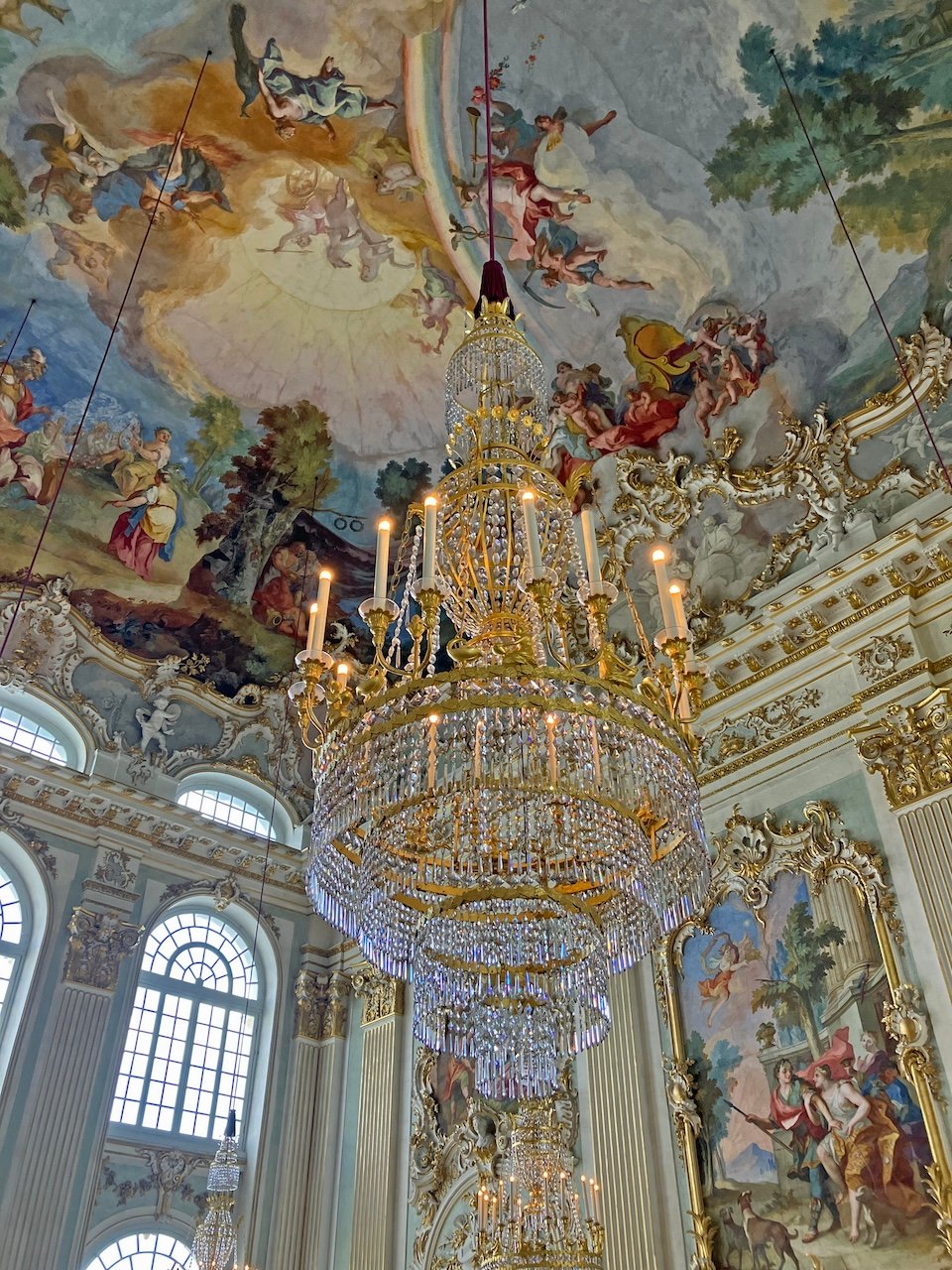
Munich Travel Guide: Landmarks
Marienplatz ♡
Marienplatz stands as the vibrant central square of Munich, brimming with historical landmarks and cultural significance. At its heart is the impressive New Town Hall (Neues Rathaus), a Gothic-style masterpiece featuring the renowned Glockenspiel with animated figures that entertain spectators several times a day. Adjacent to the square is the Mariensäule (Mary's Column), a striking monument crowned with a golden statue of Mary, commemorating the city's resilience after the Thirty Years' War (1618-1648). Another notable feature is the Fischbrunnen (Fish Fountain), a captivating fountain adorned with Bavarian folklore motifs and mythological figures. The Old Town Hall (Altes Rathaus) adds to the charm with its toy museum. Nearby, St. Peter's Church (Peterskirche) offers breathtaking views from its tower, including vistas of the Alps on clear days. Additionally, the bustling Viktualienmarkt, adjacent to Marienplatz, entices visitors with a diverse array of fresh produce, gourmet treats, and traditional Bavarian fare. Marienplatz encapsulates the essence of Munich's heritage, architectural splendor, and lively atmosphere, drawing in tourists and locals alike to explore its timeless allure.
Odeonsplatz
Odeonsplatz is a square located just a short walk from the Munich Residenz. At its center stands the Feldherrnhalle (Field Marshals' Hall), an impressive loggia adorned with statues of Bavarian military leaders, reminiscent of the Loggia dei Lanzi in Florence and commissioned by King Ludwig I. Flanking the square is the Theatine Church (Theatinerkirche), a stunning Baroque masterpiece with a distinctive yellow facade and intricate interior, dedicated to St. Cajetan and burial spot of a number of members of the Bavarian Royal Family.
The grandeur of Odeonsplatz extends along Ludwigstrasse, a majestic boulevard lined with neo-Renaissance buildings that house institutions like the Ludwig-Maximilians-Universität Munich and the Bavarian State Library.
Surrounding the square are the tranquil Hofgarten, offering an oasis amidst the urban hustle and bustle. Odeonsplatz, with its blend of historical monuments, cultural institutions, and natural beauty, stands as a testament to Munich's rich heritage and architectural elegance, inviting visitors to immerse themselves in its timeless charm.
Isar Gate (Isartor)
The Isar Gate, also known as Isartor in German, is one of Munich's historic city gates and a significant architectural landmark. It is situated in the eastern part of the city center and is one of the four main gates that once provided access through the city's medieval walls.
Constructed in the late 14th century, the Isar Gate served as a vital entry point to Munich for travelers arriving from the direction of the Isar River. In fact, its name, Isartor, is derived from the nearby Isar River. The gate is characterized by its distinctive pointed towers and fortified walls, typical of medieval gate architecture.
Today, the Isar Gate stands as a symbol of Munich's medieval past and is a popular tourist attraction, offering visitors a glimpse into the city's historical defenses. It is also home to the quirky Valentin-Karlstadt-Musäum, a museum dedicated to the renowned Bavarian entertainer Karl Valentin and his partner Liesl Karlstadt.
Karlsplatz
Karlsplatz is a bustling square and prominent transportation hub located in the heart of Munich. The square serves as a major intersection for pedestrians, trams, buses, and commuters traveling to and from the city center.
Karlsplatz is characterized by its wide open space, surrounded by historic buildings, shops, restaurants, and other attractions. One of the notable landmarks on the square is the Karlstor, a gate that once formed part of Munich's medieval city walls. The gate's distinctive towers and arches add a touch of historical charm to the bustling urban environment.
The square is a popular meeting point for locals and visitors alike, offering a vibrant atmosphere with street performers, outdoor cafes, and street vendors. In addition to its role as a transportation hub and social gathering place, Karlsplatz is also within walking distance of several attractions, including the historic city center, Marienplatz, the Frauenkirche, and the Munich Residenz, making it a convenient starting point for exploring the city's rich heritage and cultural landmarks.
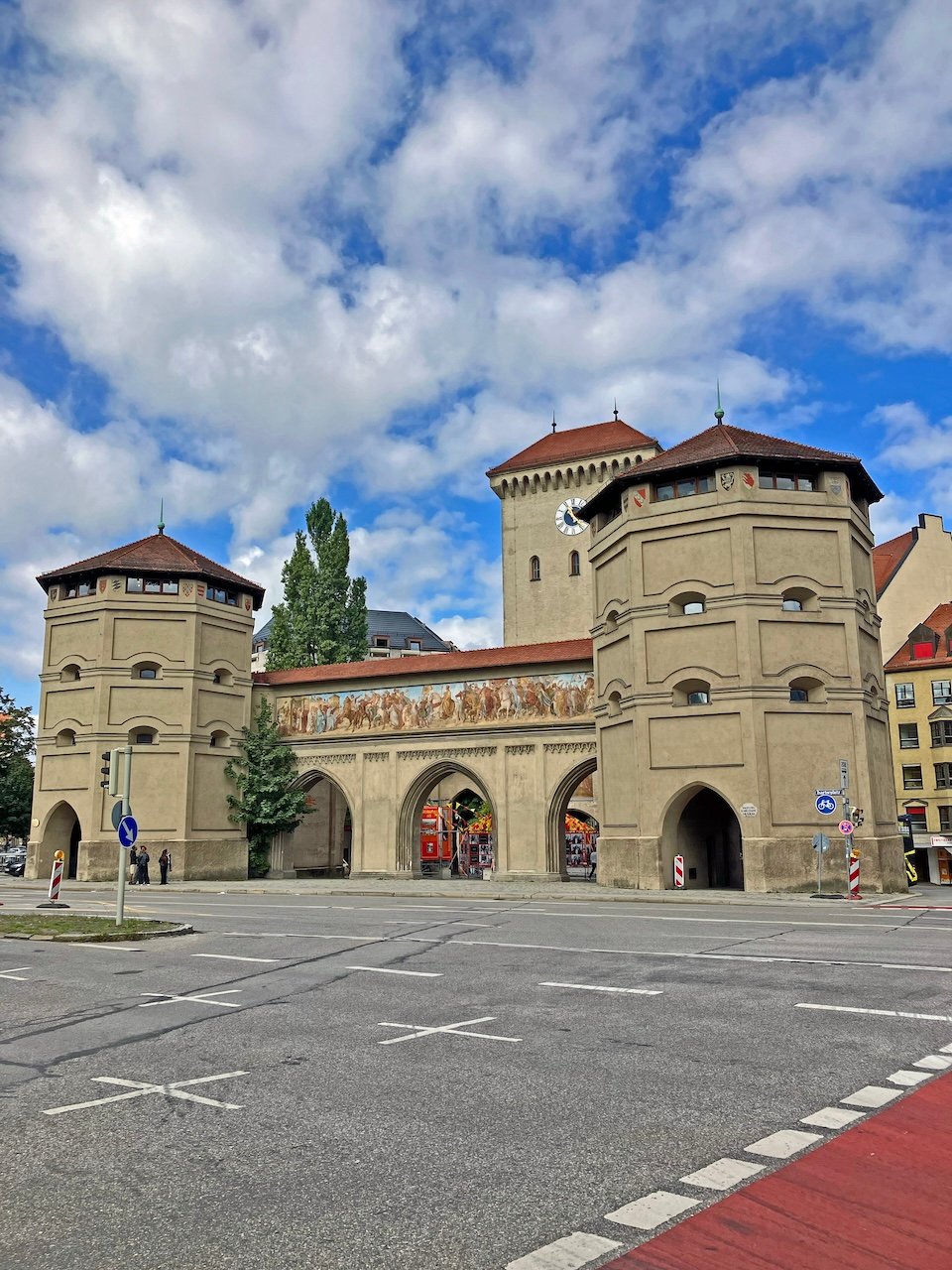
Munich Travel Guide: Top Museums
Munich boasts over 80 museums showcasing a wealth of cultural, historical, and artistic treasures. Note that many museums in Munich are closed on Mondays, but it is advisable to check each museum's official website for their specific closing days, including possible closures on holidays.
For the art aficionado:
- Alte Pinakothek: ♡ The Alte Pinakothek in Munich stands as a revered institution housing an extraordinary collection of European paintings spanning from the 14th to the 18th centuries. Among its iconic art pieces are Albrecht Dürer's famous "Self-Portrait in a Fur-Collared Robe," showcasing his introspective gaze and exquisite attention to detail. Additionally, the museum features Leonardo da Vinci's tender "Madonna of the Carnation," exemplifying the Renaissance master's skill in portraying maternal grace and tenderness. Sandro Botticelli's poignant "Lamentation over the Dead Christ" is another notable highlight, capturing the emotional intensity of Christ's mourning followers. These masterworks, among others in the Alte Pinakothek's collection, offer visitors a profound journey through European art history, showcasing the talents and visions of renowned artists from the Renaissance to the Baroque era.
- Neue Pinakothek: The Neue Pinakothek is a distinguished art museum renowned for its extensive collection of 19th-century European paintings. It showcases works from the Romanticism, Realism, Impressionism, and Symbolism movements, providing a comprehensive overview of the artistic trends of the era.
The Neue Pinakothek is currently closed for remodeling and is set to re-open in 2029. During this time, a selection of the most prominent works from the museum's collection - including Gustav Klint's painting of Margaret Stonborough-Wittgenstein, Vincent Van Gogh's "Sunflowers," and Claude Monet's "Water Lilies" are on display on the ground floor of the Alte Pinakothek. - Pinakothek der Moderne: Pinakothek der Moderne in Munich is a renowned museum dedicated to modern and contemporary art, design, and architecture. It houses an extensive collection that spans various artistic movements and disciplines, showcasing the evolution of creativity from the 20th century to the present day. Some of the prominent pieces on display in its collection include: Henri Matisse's "Still Life with Geraniums," August Macke's "Mädchen unter Bäumen", and Max Ernst's "The Fireside Angel" which was later retitled "The Triumph of Surrealism."
-
Lenbachhaus: The Lenbachhaus in Munich is a prominent art museum known for its extensive collection of modern and contemporary art, particularly focusing on the "Blauer Reiter" (Blue Rider) group and the works of Wassily Kandinsky and Franz Marc. The museum is housed in the former residence of the renowned painter Franz von Lenbach, which was inspired by an Italian villa.
-
Museum Brandhorst: The Museum Brandhorst in Munich is a modern art museum renowned for its impressive collection of contemporary artworks, particularly focusing on post-war art and contemporary movements. The museum is located in the Kunstareal (Art Quarter) of Munich, adjacent to other renowned art institutions such as the Pinakothek der Moderne and the Alte Pinakothek.
The Museum Brandhorst's collection includes a wide range of artworks from the 1960s to the present day, featuring prominent artists such as Cy Twombly, Andy Warhol, Damien Hirst, Gerhard Richter, and Sigmar Polke, among others. The museum is particularly known for its extensive holdings of works by Cy Twombly, showcasing his unique blend of abstract expressionism and calligraphic forms. Additionally, Museum Brandhorst is home to the largest collection of works by Andy Warhol in Europe.
- Glyptothek: The Glyptothek in Munich is a renowned museum dedicated to ancient sculpture, particularly focusing on Greek and Roman artworks. It was commissioned by King Ludwig I of Bavaria and is Munich's oldest public museum. The museum's name, Glyptothek, is derived from the Greek words "glyphein" (to carve) and "theke" (repository), emphasizing its focus on sculptural art. One of the most significant pieces in the Glyptothek is Barberini Faun, a marble sculpture from the late 3rd or early 2nd century BC.
For the history lover:
- Munich Residenz: ♡ The Munich Residenz is a historic palace complex that served as the royal residence of the Bavarian monarchs for centuries. It showcases a blend of architectural styles, including Renaissance, Baroque, Rococo, and Neoclassical elements. The Residenz suffered significant damage from bombings during World War II, particularly to its interior, but has since been restored. Some of the highlights of the Residenz include: the Antiquarium, the Residenz Treasury, and the Ancestral Gallery. In particular, the Antiquarium is one of the oldest rooms in the Residenz and features stunning Renaissance architecture with intricate stucco work and vaulted ceilings. It was originally used to display ancient sculptures and now serves as a ceremonial hall.
- Schloss Nymphenburg (Nymphenburg Palace): ♡ Schloss Nymphenburg is a magnificent Baroque palace in Munich. It was built as a summer residence for the Bavarian monarchs. The palace complex is set amidst expansive gardens and the larger Schlosspark Nymphenburg. The palace is renowned for its opulent interiors, grand halls, and ornate decorations. Highlights of Schloss Nymphenburg include the opulent Great Hall, a marvel of Baroque architecture that leaves visitors in awe with its intricate frescoes and lavish stucco work. This grand space, designed to impress and entertain, reflects the wealth and power of Bavaria's rulers. Equally captivating is King Ludwig I's Gallery of Beauties, a unique collection of portraits that showcases the diverse allure of women from various social backgrounds. Commissioned by King Ludwig I himself, these paintings are more than mere depictions of physical beauty; they are windows into the culture and ideals of the time, celebrating the individual grace of each subject. Advance tickets for Schloss Nymphenburg are recommended and can be purchased directly from the Schloss Nymphenburg website. More information about Nymphenburg Palace can also be found in our blog post: The Ultimate Visitor's Guide to Munich Nymphenburg Palace.
- State Museum of Egyptian Art: The State Museum of Egyptian Art (Staatliches Museum Ägyptischer Kunst) in Munich is a renowned institution dedicated to the art, culture, and history of ancient Egypt. It houses an extensive collection of Egyptian artifacts, spanning thousands of years and showcasing various aspects of ancient Egyptian life, religion, and society. In fact, it is the only museum outside of Egypt completely dedicated to art from Ancient Egypt.
- Nazi Documentation Center: The Nazi Documentation Center (NS-Dokumentationszentrum) in Munich is a museum and educational institution dedicated to documenting and educating the public about the history of National Socialism (Nazism) in Germany, particularly focusing on Munich's role as the "Capital of the Movement" during the Nazi era. The museum is housed in the former Brown House (Braunes Haus), which was the headquarters of the Nazi Party in Munich and served as a central hub for Nazi activities, propaganda, and organizational meetings. Admission is free of charge. No advance tickets are required.
- Dachau Concentration Camp Memorial: Located just 18 miles northwest of Munich is the town of Dachau and the solemn grounds of the Dachau Concentration Camp Memorial (KZ-Gedenkstätte Dachau). It serves as a memorial and museum to honor the victims of the Nazi regime and educate visitors about the atrocities committed during the Holocaust. The Dachau Concentration Camp was one of the first concentration camps established by the Nazis in 1933 and served as a model for subsequent camps. The memorial site encompasses the preserved camp area, prision, barracks, administration building, the crematorium, a Catholic chapel, a Protestant chapel, and a Jewish memorial.
The memorial is accessible from Munich by public transportation, making it relatively easy for visitors to reach. The most common way to get to Dachau from Munich is by taking the S-Bahn (suburban train) S2 line from Munich Hbf (central station) to Dachau station. From Dachau station, visitors can then take a bus or walk to the memorial site, which is located about 1.2 miles (2 km) away. The journey from Munich to Dachau by S-Bahn takes approximately 20-30 minutes, and buses from Dachau station to the memorial site run regularly.
Visiting the Dachau Concentration Camp Memorial is a somber and educational experience, offering a profound opportunity to reflect on the horrors of the Holocaust, remember the victims, and reaffirm the importance of tolerance, human rights, and remembrance in today's world. Admission is free of charge.
For families:
- Deutsches Museum: The Deutsches Museum in Munich is one of the world's largest and most renowned science and technology museums. It is dedicated to showcasing the advancements and innovations in various fields of science, engineering, technology, and industry throughout history. The museum's extensive collections and interactive exhibits offer visitors a comprehensive and immersive experience in the world of science and technology. The museum's exhibitions cover a wide range of topics, including astronomy, physics, chemistry, biology, medicine, aerospace, automotive engineering, telecommunications, energy, mining, agriculture, and more. Each exhibition area features interactive displays, hands-on experiments, models, artifacts, and multimedia presentations that engage visitors of all ages.
- BMW Museum & BMW Welt: ♡ The BMW Museum and BMW Welt (BMW World) are two interconnected attractions located in Munich dedicated to showcasing the history, innovations, and achievements of the BMW Group (Bayerische Motoren Werke). The BMW Museum offers visitors a journey through the fascinating world of BMW's automotive history, design philosophy, technological advancements, and motorsport heritage. Exhibits include a wide range of BMW vehicles, from classic cars and iconic models to concept cars and prototypes, alongside interactive displays. Adjacent to the BMW Museum, BMW Welt serves as a multi-functional experience center combining an automotive showroom, customer delivery center, event venue, and exhibition space. It provides a comprehensive look into BMW's current lineup of vehicles, innovations in mobility, and future technologies. Both attractions showcase BMW's legacy as a leading global brand in the automotive industry while also highlighting its vision for the future of mobility and driving experiences.
- FC Bayern Museum: The FC Bayern Munich Museum is a museum dedicated to one of the most successful and popular football clubs in the world, FC Bayern Munich. Located at the team's home stadium, the Allianz Arena, the museum offers fans and visitors an immersive experience into the rich history, achievements, and culture of FC Bayern Munich. The museum's exhibits showcase the club's glorious past, including its founding in 1900, memorable victories, legendary players, iconic moments, and its rise to become a global football powerhouse. Visitors can explore a wide range of artifacts, memorabilia, trophies, jerseys, boots, and multimedia presentations that highlight the club's triumphs in domestic and international competitions.
-
Museum of Man and Nature: The Museum of Man and Nature (Museum Mensch und Natur) in Munich is a fascinating institution dedicated to exploring the relationship between humans and the natural world. Housed in the Nymphenburg Palace, the museum offers a wide range of exhibits related to Earth's ecosystems, geological formations, prehistoric life, flora and fauna, climate change, sustainability, and the impact of human activities on the environment. The museum's collections include geological specimens, fossils, minerals, plants, animals, and anthropological artifacts that provide insights into the planet's evolution and the interconnectedness of life forms.
- Museum of Transportation: The Museum of Transportation (Verkehrszentrum) is dedicated to showcasing the history, evolution, and significance of transportation systems, vehicles, and mobility technologies. Housed within the Deutsches Museum, the Museum of Transportation offers visitors a comprehensive look into the world of transportation, from early modes of travel to modern innovations.
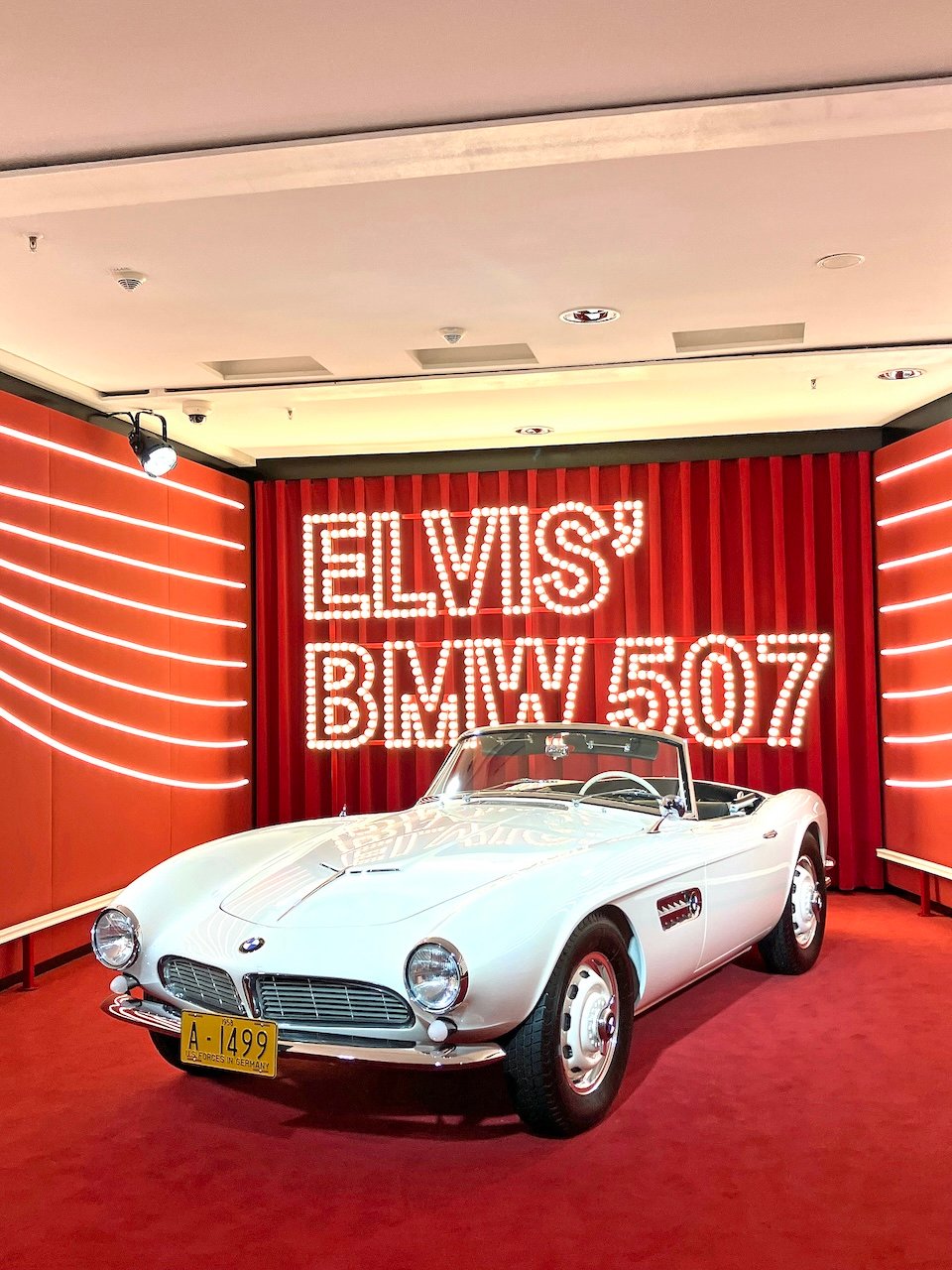
Munich Travel Guide: Popular Churches
While Munich is dotted with churches, we've curated a list of some of the most popular ones for visitors to explore.
Frauenkirche
The Frauenkirche, also known as the Cathedral of Our Dear Lady, is a historic and iconic landmark in Munich. It is one of the city's most recognizable symbols and a significant example of late Gothic architecture in Bavaria. The Frauenkirche is characterized by its distinctive twin towers, which rise to a height of around 325 feet (99 meters). The towers are topped with onion-shaped domes that are visible from various points in the city. The interior features a spacious nave with impressive Gothic vaulting and beautiful stained glass windows. During World War II, the Frauenkirche sustained significant damage during the Allied Forces' bombing campaigns of Munich, experiencing a catastrophic roof collapse, substantial damage to one of its hallmark towers, and the destruction of the majority of its interior. The journey to restore Frauenkirche to its former glory culminated in 1994, marking a pivotal moment in the cathedral's history.
Currently, this majestic cathedral stands as the ecclesiastical heart of Munich, serving as the residence of the Archbishop of Munich and Freising. In fact, the Frauenkirche bears a significant link to Pope Benedict XVI (2005-2013), who governed this archdiocese as Cardinal Joseph Ratzinger, the Archbishop of Munich and Freising, from 1977 to 1982.
Moreover, local folklore states that the Frauenkirche's architect struck a dark bargain with the devil himself to secure funding for its construction. This eerie narrative has birthed various versions, each more intriguing than the last. Visitors are often captivated by the supposed devil's footprint, a mysterious imprint near the cathedral's entrance, serving as a chilling reminder of this legend.
Asamkirche ♡
The Asamkirche, also known as St. Johann Nepomuk Church or Asam Church, is a small, stunning Baroque church located in Munich's Altstadt. It is known for its exquisite architecture and rich interior decorations. The Asamkirche was built between 1733 and 1746 by the brothers Cosmas Damian Asam and Egid Quirin Asam, who were prominent Baroque artists in Munich. They designed the church as a private chapel for their own use, but later opened it to the public.
The exterior of the Asamkirche may appear modest compared to other churches in Munich, but its interior is a masterpiece of Baroque art and craftsmanship. The church is relatively small but features a richly decorated nave, a magnificent high altar, ornate stucco work, and intricate frescoes that cover the ceilings and walls.
St. Michael München (Michaelskirche)
St. Michael's München (also known as Michaelskirche or St. Michael's Church) is a historic church known for its stunning Renaissance architecture and status as the largest Renaissance building north of the Alps. The current church was constructed between 1583 and 1597 under the patronage of Wilhelm V, Duke of Bavaria.
St. Michael's Church is also famed for its historic pipe organ, which dates back to the late 16th century. The organ has undergone several renovations and additions over the centuries. Today, St. Michael's Church hosts frequent organ concerts which are free (donations requested) and open to the public. More information about organ concerts can be found on the St. Michael Munich website.
St. Paul's Church (Paulskirche)
St. Paul's Church, known as Paulskirche in German, is a notable Catholic church located on the northern edge of the Theresienwiese (where Oktoberfest takes place) in Ludwigsvorstadt. The church is clearly visible from the Oktoberfest grounds. Built in the exquisite neo-gothic style from 1892 to 1906, its main tower reaches a height of 318 feet (97 meters). This tower, accessible to climb by visitors, provides unparalleled panoramic views of Munich, offering a particularly spectacular vista during Oktoberfest.
Initially, the church's interior was a breathtaking sight, adorned with an ornately decorated high altar and an elegant stone canopy. Yet, the ravages of World War II inflicted devastating damage on much of the church's original interior. The reconstruction efforts of the 1950s breathed new life into St. Paul's, infusing it with a modern twist on its neo-gothic roots.
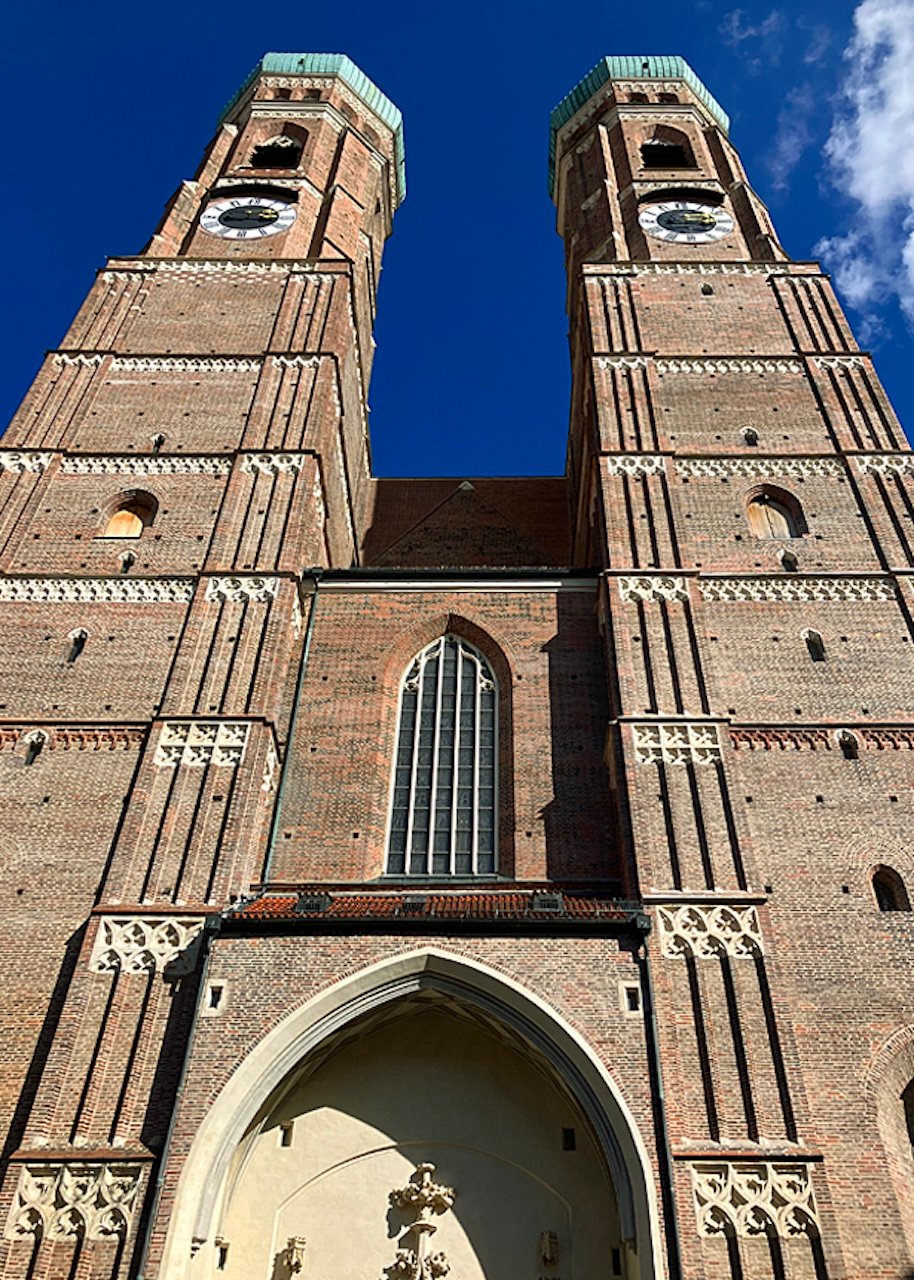
Munich Travel Guide: Gardens & Parks
Englischer Garten (English Garden)
The Englischer Garten, or English Garden, is a sprawling public park located in the heart of Munich, and is one of the largest urban parks in the world. Designed in the late 18th century, the park spans over 900 acres and offers a serene retreat for locals and visitors alike. Its name comes from the English landscape style it was modeled after, characterized by expansive lawns, meandering paths, and naturalistic landscaping.
The Englischer Garten is dotted with historical monuments, charming beer gardens, and recreational facilities. Visitors can explore landmarks such as the Monopteros, a neoclassical temple offering panoramic views of the park, or the Japanese teahouse and garden, a serene spot inspired by traditional Japanese architecture. However, the most famous landmark of the Englischer Garten is the Chinese Tower, a pagoda constructed in the Chinese style which rises more than 75 feet (25 meters) into the air, and dates back to 1790.
Another iconic feature of the Englischer Garten is the Eisbach River, where visitors can watch surfers ride the standing wave created by the water's flow. This unique surfing spot has become a popular attraction and adds a dynamic element to the park's ambiance.
The park's extensive network of trails is ideal for cycling, jogging, or walking, while its open meadows and shaded groves provide ample space for relaxation and recreation. During the warmer months, the beer gardens within the Englischer Garten come alive with visitors enjoying refreshing beverages and traditional Bavarian cuisine. The largest beer garden within the Englischer Garten is located at the Chinesischer Turm (Chinese Tower).
Schlosspark Nymphenburg
Schlosspark Nymphenburg, or Nymphenburg Palace Park, is a magnificent and expansive park surrounding the historic Schloss Nymphenburg (Nymphenburg Palace). Schlosspark Nymphenburg covers an area of nearly 500 acres and is designed in the style of a French formal garden, characterized by geometrically arranged flowerbeds, pathways, water features, and symmetrical designs. The park is divided into several distinct sections, each with its own unique attractions and landscaping elements.
Hofgarten
Hofgarten, located in the heart of Munich, is a historic garden that dates back to the 17th century and is one of the oldest classical gardens in Germany. Designed in the Italian Renaissance style, the garden features symmetrical pathways, manicured lawns, ornamental flower beds, and sculptures, creating a serene and elegant ambiance. The central pavilion, known as the Dianatempel, adds to the garden's charm with its neoclassical architecture. Hofgarten is a popular destination for locals and visitors seeking a peaceful retreat, leisurely walks, or a place to relax and enjoy nature.
The Hofgarten in Munich is located near the Bavarian State Chancellery and the Residenz, which is the former royal palace of the Bavarian monarchs. It is situated in close proximity to Odeonsplatz and the historic city center, making it easily accessible to visitors exploring Munich's cultural and architectural landmarks.
Botanical Garden Munich-Nymphenburg
The Botanical Garden Munich-Nymphenburg is a captivating botanical oasis located near Schloss Nymphenburg. Spanning over 50 acres, the garden is a haven for plant enthusiasts, researchers, and nature lovers. The botanical garden features an extensive collection of plants from diverse habitats, including alpine flora, tropical species, cacti, and rare botanical specimens. The garden's sections, such as the Alpine House, Africa and Madagascar House, and a number of tropical greenhouses, showcase the rich biodiversity of plant life from around the world. Visitors can explore winding pathways, serene ponds, and educational displays.
Olympic Park
The Olympic Park in Munich is a renowned landmark that gained global recognition during the 1972 Summer Olympics. Spanning over 850 acres, the park features sports facilities, recreational areas, cultural venues, and green spaces. Its iconic centerpiece is the Olympic Stadium, characterized by its tent-like roof structure. Visitors can enjoy a range of activities such as guided tours of the stadium, visiting the Olympic Tower for panoramic views of the city, enjoying the Olympic Hall for concerts and events, and relaxing in the park's expansive lawns and gardens. The park also hosts various cultural events, exhibitions, and festivals throughout the year.
Theresienwiese
Theresienwiese, often referred to simply as Wiesn, is a large open space in Munich, host of the world-famous Oktoberfest celebrations. Spanning over 100 acres, Theresienwiese serves as the main venue for Oktoberfest, where millions of visitors gather annually to enjoy beer tents, traditional Bavarian food, carnival rides, and cultural festivities.
Outside of Oktoberfest, Theresienwiese is a versatile public space used for various events and activities throughout the year, including outdoor concerts and sporting events. During the summer months, the park attracts locals and tourists who come to relax, picnic, play sports, and enjoy the sunshine.
Theresienwiese is also home to significant landmarks such as the Bavaria statue, a monumental bronze statue symbolizing the state of Bavaria.
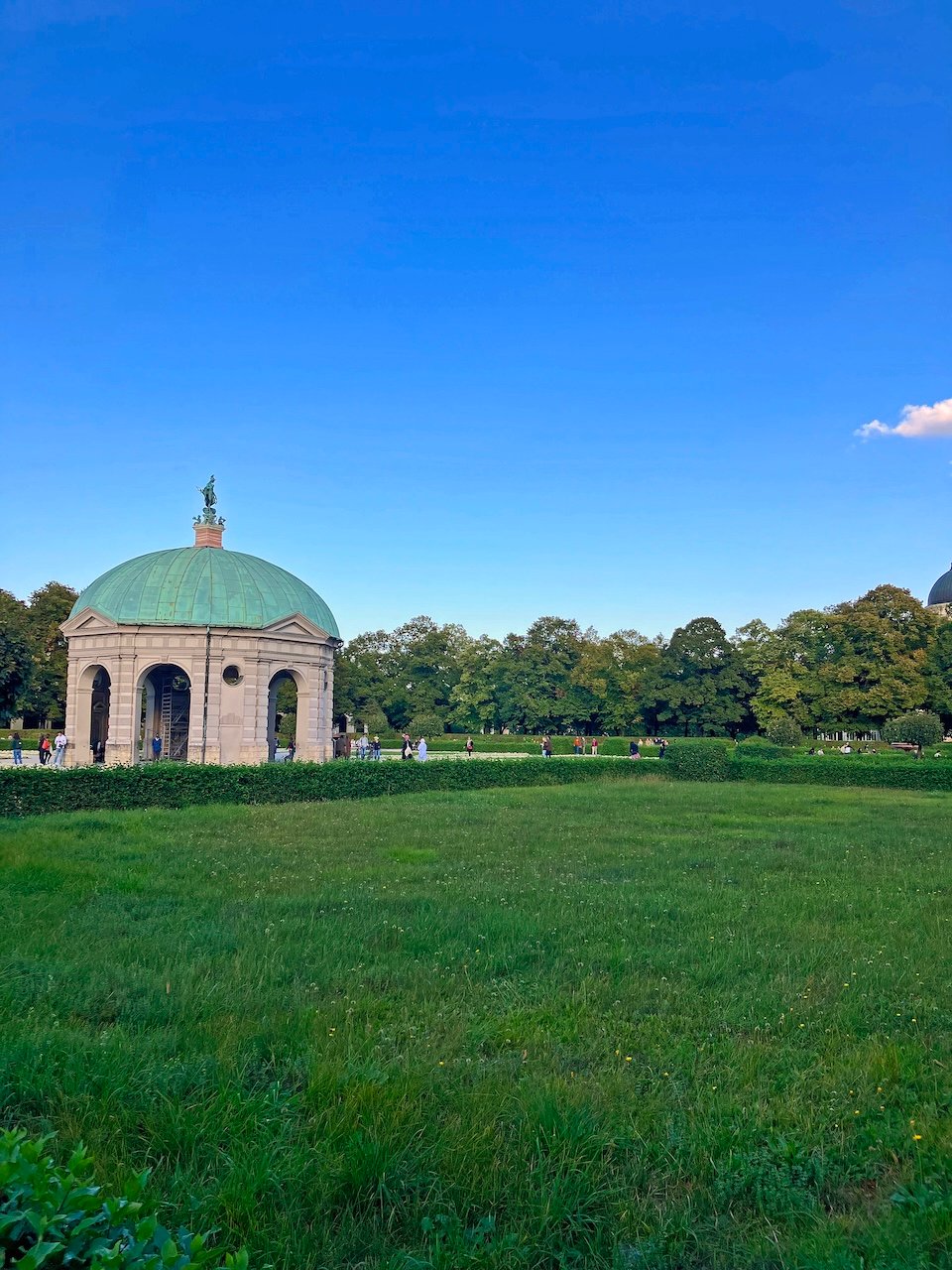
Munich Travel Guide: A Taste of Bavaria
From traditional Bavarian dishes like pretzels and sausages to international cuisine and phenomenal bakeries, Munich serves up a diverse palette of culinary options. Enjoy a taste of Bavaria by sampling local delicacies at traditional beer gardens, savoring seasonal specialties at fine dining establishments, and indulging in delicious food at vibrant markets.
Beer Gardens:
Beer gardens are a cornerstone of Munich's cultural and social landscape, providing an experience that is a uniquely Bavarian tradition. The beer served in Munich's beer gardens is often brewed locally, following traditional Bavarian brewing methods. Popular beer styles include Helles (light lager), Dunkles (dark lager), Weißbier (wheat beer), and seasonal specialties such as Maibock and Oktoberfestbier. Traditional Bavarian food is also a highlight, with classics like pretzels, weißwurst (white sausage), knödel (dumplings), and schnitzel being popular choices.
Visiting a beer garden is a cherished social tradition in Munich, especially during the warmer months when locals and tourists alike flock to these outdoor venues to enjoy good company, delicious beer, hearty food, and the vibrant ambiance of Bavarian hospitality. Munich's beer gardens are known for their family-friendly atmosphere, welcoming visitors of all ages.
Beer Halls:
Beer halls in Munich are iconic establishments that play a central role in the city's beer culture and social life. Beer halls in Munich have a rich history dating back several centuries. They originated as places where breweries served their freshly brewed beer directly to customers, often accompanied by simple food offerings.
Munich's beer halls are known for their cozy and traditional ambiance, with wooden interiors, long communal tables and benches, decorative steins and mugs, and lively atmospheres. Like beer gardens in Munich, the beer halls also serve locally brewed beer. Beer halls in Munich are renowned for their hearty and delicious Bavarian cuisine. Dishes such as weißwurst (white sausage), pretzels, knödel (dumplings), schnitzel, roast pork, and sauerkraut are staples on the menu, perfectly complementing the beer.
Many beer halls in Munich feature live music performances, traditional Bavarian music bands, and occasional entertainment such as yodeling, folk dancing, and sing-alongs. These elements add to the festive and vibrant atmosphere of the beer halls.
The Best Beer Halls & Beer Gardens in Munich >
Bakeries:
German bakeries in Munich are renowned for their delicious and diverse array of baked goods, reflecting the rich culinary heritage of Bavaria and Germany as a whole. These bakeries pride themselves on producing traditional bread, including hearty rye breads and crusty sourdough loaves, alongside iconic treats like pretzels, known locally as "Brezen" or "Brez'n." In addition to bread, Munich's bakeries offer an enticing selection of pastries and cakes, such as Apfelstrudel, Käsekuchen, Bienenstich, and Schwarzwalder Kirschtorte. Savory options like sausage rolls, meat-filled pastries, and savory pretzel sandwiches add to the bakery experience, showcasing a balance of sweet and savory delights. With a focus on quality ingredients, time-honored recipes, and skilled craftsmanship, German bakeries in Munich contribute to the city's vibrant culinary scene and coffee culture, offering locals and visitors alike a taste of Bavarian baking tradition.
Speciality Foods & Drinks:
Munich boasts an array of specialty foods and drinks that are a must-try for any visitor looking to indulge in the city's unique culinary offerings.
- White Sausage (Weißwurst): A traditional Bavarian sausage made from finely minced veal and pork, flavored with parsley, lemon, onions, and spices. Weißwurst is typically served with sweet mustard and eaten for breakfast.
- Pretzels (Brezen): Munich is famous for its large, doughy pretzels, known locally as "Brezen" or "Brez'n." These salty snacks are a staple in Bavarian cuisine and are often enjoyed with butter or as an accompaniment to beer in beer gardens and beer halls.
- Schweinshaxe: A hearty Bavarian dish consisting of roasted pork knuckle, crispy on the outside and tender on the inside. Schweinshaxe is usually served with sauerkraut (fermented cabbage) and potato dumplings (Knödel) or mashed potatoes.
- Obatzda: A savory cheese spread made from camembert or brie cheese mixed with butter, onions, paprika, and spices. Obatzda is typically served with fresh pretzels and pairs well with a cold beer.
- Liver Meatloaf (Leberkäse): A type of savory meatloaf made from minced pork, beef, and onions, seasoned with herbs and spices. Leberkäse is often sliced and served hot in sandwiches (Leberkässemmel). However, despite the name, Leberkäse, does not contain any liver.
- Käsespätzle (Spätzle): Spätzle consists of small, soft egg noodles called that are cooked until tender, then mixed with grated cheese (often Emmental or Bergkäse) and caramelized onions. Envision it as Bavaria's own unique twist on the classic macaroni and cheese.
- Münchner Schnitzel: A Munich specialty, Münchner Schnitzel is a breaded and pan-fried veal or pork cutlet served with a lemon wedge. It's typically larger and thinner than traditional Wiener Schnitzel and often accompanied by potato salad or fries.
- Roasted Chestnuts (Maroni): Warm, roasted chestnuts are a popular snack sold during the cooler months at both Christmas markets and by street vendors throughout Munich.
- Gebrannte Mandeln: Candied almonds roasted with sugar and spices, frequently sold by both street vendors and at markets.
- Kartoffelpuffer: Crispy potato pancakes served with applesauce or sour cream. These savory pancakes are a favorite at Christmas markets.
- Stollen: A rich and dense fruitcake made with dried fruits, nuts, spices, and marzipan. Stollen is a traditional German Christmas dessert, and you'll find variations like Dresden Stollen or Christstollen at Christmas markets.
- Mulled Wine (Glühwein): Glühwein is hot mulled wine infused with spices like cinnamon, cloves, and orange peel. It's a popular drink to warm up during the winter months and is often served in festive mugs at Christmas markets throughout Munich.
- Beer: Munich's beer culture is integral to its culinary identity. Visitors should try traditional Bavarian beers such as Helles (light lager), Dunkles (dark lager), Weißbier (wheat beer), and seasonal specialties like Maibock and Oktoberfestbier, ideally paired with local dishes for an authentic experience.
Viktualienmarkt:
The Viktualienmarkt is Munich's vibrant and historic open-air market, renowned for its fresh produce, local delicacies, and lively atmosphere. Located in the city center near Marienplatz, the market offers a wide range of goods including fruits, vegetables, meats, cheeses, baked goods, flowers, spices, and traditional Bavarian specialties. Visitors can explore the colorful stalls, sample regional treats like Leberkäse sandwiches or Obatzda with pretzels, and purchase ingredients for meals. Additionally, the market features a large beer garden where patrons can relax with a cold beer and enjoy the bustling ambiance. What sets the Viktualienmarkt beer garden apart is its unique rotating tap system, where Munich's premier breweries take turns showcasing their best brews every six weeks.
It's worth noting that the Viktualienmarkt is closed on Sundays, so it's best to plan a visit during the weekdays or Saturdays to experience this lively hub and enjoy a great meal.
Popular Restaurants:
Munich is home to a number of fantastic eateries. Our dining experiences were largely centered around beer halls, drawn in by their inviting ambiance. This selection is not exhaustive, but it encapsulates a handful of establishments in Munich where we had memorable meals or which came highly recommended by locals.- Hofbräuhaus (Altstadt)
- Weisses Bräuhaus im Tal (Altstadt)
- Herrschaftszeiten - Das Paulaner im Tal (Altstadt)
- Augustiner Klosterwirt (Altstadt)
- Bäckerei Aumüller (Altstadt)
Looking for additional restaurant recommendations for your trip to Munich? Check out the links below.
MICHELIN Guide: Munich >
The 30 Essential Munich Restaurants >
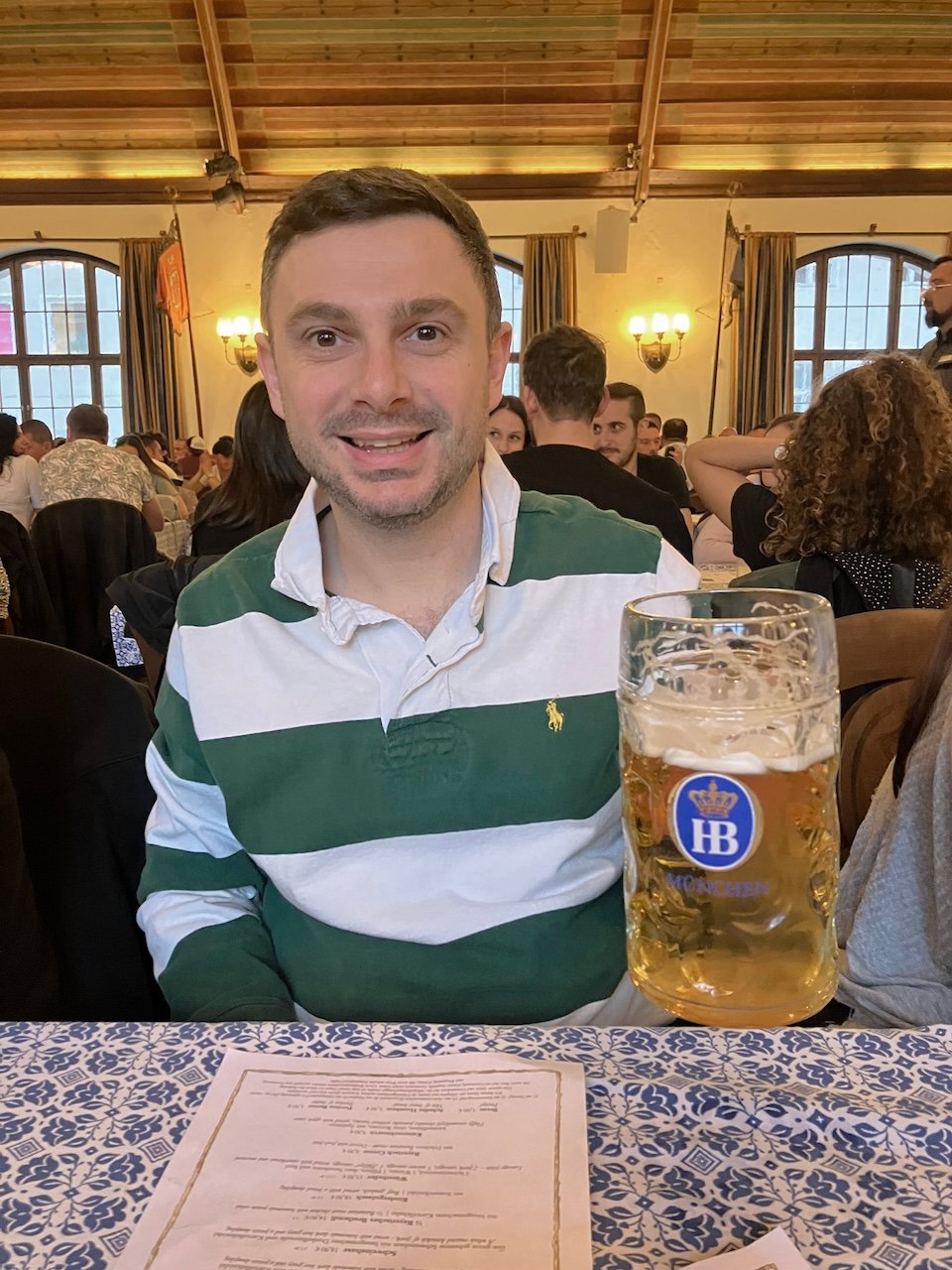
Munich Shopping Guide
Munich offers everything from traditional Trachten to high-end luxury shops selling international brands. It is important to note that most shops, including grocery stores, are closed on Sundays in Germany. Some popular shopping areas in Munich include:
-
Marienplatz and Kaufingerstraße: Marienplatz, Munich's central square, is surrounded by shops and department stores, making it a bustling hub for shopping. Kaufingerstraße, the pedestrian street leading off Marienplatz, is lined with popular stores, boutiques, and souvenir shops, offering a mix of local products and international brands.
-
Maximilianstraße: Known as Munich's luxury shopping street, Maximilianstraße is home to high-end fashion boutiques, designer labels, and luxury boutiques such as Louis Vuitton, Gucci, and Chanel.
-
Viktualienmarkt: While primarily a food market, Viktualienmarkt also features stalls selling traditional Bavarian products, local delicacies, and artisanal crafts. It's a great place to pick up unique souvenirs like cheese, spices, and gourmet food items.
-
Theatinerstraße: This elegant street near Odeonsplatz is lined with chic boutiques, upscale shops, and specialty stores offering fashion, accessories, jewelry, and cosmetics from renowned brands and designers.
-
Galeria Kaufhof & Karstadt: These department stores, located in prominent locations such as Marienplatz and Bahnhofplatz, offer a wide selection of products ranging from clothing and accessories to household goods.
Trachten Retailers
Trachten, traditional Bavarian clothing, which includes Lederhosen and Dirndls, is an integral part of Munich's cultural heritage, especially during festive occasions like Oktoberfest. Below is a list of some notable Trachten retailers in Munich where you can find authentic and high-quality traditional Bavarian attire.
There are additional pop-up Trachten shops during Oktoberfest, however, the ones listed here are open year round.
Traditional Souvenir Shops
From beer steins to Nutcrackers, beautifully made Christmas ornaments, and even cuckoo clocks, there are plenty of traditional souvenirs to bring home from your trip to Munich. Below is a list of some notable retailers in Munich's Altstadt neighborhood where you can find authentic and high-quality traditional Bavarian souvenirs.
- Herrmann Geschenke GmbH (Marienplatz)
- Max Krug (Marienplatz)
- Souvenirs Flohr (Hofbräuhaus)
Grocery Stores
Grocery stores in Munich are convenient spots to purchase chocolate souvenirs, local food items, or essentials like snacks and drinks. Whether you're looking for souvenirs to bring home or need to stock up on essentials during your stay, Munich's grocery stores offer a wide selection of products to meet your needs.
We visited this Rewe near Marienplatz on a few occasions since it was conveniently located near two of our hotels. Munich has a number of grocery store chains, among them:
- GALERIA Markthalle (Marienplatz)
- REWE (Tal, Sendlinger Straße, Augustenstr)
- EDEKA (Karlsplatz)
Christmas Markets (Christkindlmarkt)
Munich's Christmas markets, known as "Christkindlmarkt," are a magical and cherished tradition during the holiday season. Most Christmas markets open towards the end of November and remain open through Christmas Eve, on December 24th - following the Advent season in the Catholic Church. More information about the Christmas markets in Munich can be found on the Münchner Christkindlmarkt website.
The most popular and largest Christmas market in Munich is the Christkindlmarkt at Marienplatz. Here, you can find an array of items for sale such as handcrafted ornaments, wooden toys, intricate nativity scenes, festive decorations, and traditional Bavarian crafts like nutcrackers. Christmas markets also offer the ability to indulge in seasonal treats like roasted chestnuts, gingerbread cookies (Lebkuchen), mulled wine (Glühwein), roasted almonds (Gebrannte Mandeln), and savory snacks like bratwurst and potato pancakes (Kartoffelpuffer).
Looking for more information on shopping in Munich? Check out this guide from Hotels.com.
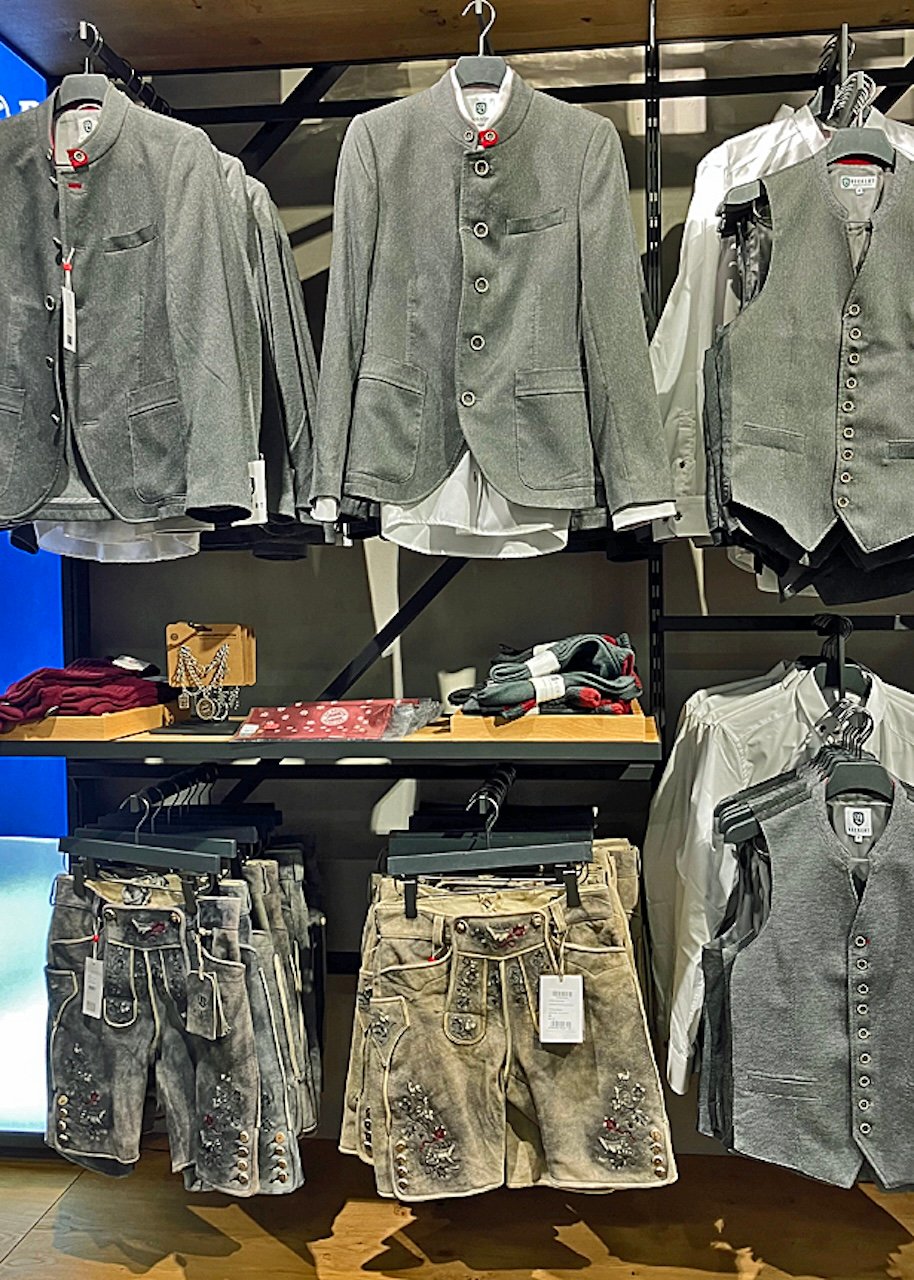
Munich Travel Guide: Transportation
Munich, the vibrant capital of Bavaria in Germany, might appear daunting in its size to newcomers. However, the city boasts a well-developed and cost-effective public transportation network, offering a reliable way to explore its diverse districts and landmarks. Leveraging navigation tools such as Google Maps can significantly streamline and improve the experience of moving around Munich.
Airport:
Munich welcomes visitors through a main airport, easily connected to the city center.- Munich is served by one main international airport: Munich Airport (Flughafen München), also known as Franz Josef Strauss International Airport (MUC).
Transportation To/From Airport:
- S-Bahn: The S-Bahn lines S1 and S8 connect Munich Airport to the city center, including Marienplatz. The journey takes approximately 40-45 minutes, with trains departing frequently throughout the day. The trip costs €13,60 from Munich Airport to Marienplatz. More information regarding the S-Bahn, including schedules and fares, can be found on the MVV Journey Planner Website. To ensure you receive the most precise details, it's essential to input your point of departure, intended destination, travel date, and time of day. Our experience using the S-Bahn for trips between Munich Airport and the city center was easy to navigate and stress-free. For those planning a trip to Munich, we highly recommend the S-Bahn as your go-to transit option from Munich Airport!
- Lufthansa Express Bus: Lufthansa operates an express bus service called the Lufthansa Express Bus that runs between Munich Airport and München Hauptbahnhof (Munich Hbf or Munich Central Station). From there, you can transfer to the U-Bahn (subway) lines U3 or U6 to reach Marienplatz. Tickets start at €12 for adults and €6,50 for children. The ride takes about 45 minutes. More information about the Lufthansa Express Bus can be found on the Lufthansa Express Bus website.
- Taxi: Taxis are available at Munich Airport, providing direct transportation to Marienplatz and other locations within the city center. A taxi is the fastest way to get into the city center, with a trip taking approximately 30 minutes, but also the most expensive. You can expect a taxi to cost anywhere from €70 - €110.
- Rideshare Apps: Both FREENOW and Uber operate in Munich. Prices for rideshare services are generally on par with traditional taxis. However, it's important to note that rideshare vehicles cannot linger at taxi stands or directly by the curb, so you may need to allow extra time for your ride to arrive after booking it at Munich Airport.
Local Transit:
- U-Bahn: The U-Bahn in Munich, also known as the Munich subway, is an efficient and extensive rapid transit system that serves the city and surrounding areas. It consists of several lines (U1 to U6) that connect key locations such as the city center, major train stations, and popular attractions. The U-Bahn is a popular mode of transportation for locals and visitors alike, offering convenient and reliable travel throughout Munich's urban area.
- S-Bahn: The S-Bahn in Munich is an integral part of the city's public transportation network, providing rapid transit services primarily within the greater Munich area. It operates multiple lines (S1 to S8) that connect Munich's city center with its suburbs, neighboring towns, and surrounding regions. The S-Bahn is especially useful for commuters and travelers looking to access key destinations, including Munich Airport, major train stations like Hauptbahnhof (central station), and popular attractions within and around the city.
- Tram: The tram system in Munich, also known as the "Trambahn," is an essential component of the city's public transport network. It consists of 13 tram lines that cover various parts of Munich, including the city center, suburbs, and outlying districts. The trams provide convenient and efficient transportation for residents and visitors, with stops at key locations such as Karlsplatz, Munich Hbf (central station), and other major hubs. The tram network complements the U-Bahn and S-Bahn services, offering passengers additional options for getting around Munich's urban area.
- Buses: Public buses in Munich form an extensive and reliable network that complements the city's other modes of public transportation. Operated by the MVV (Münchner Verkehrsgesellschaft), the bus system covers various routes within Munich and its suburbs, providing convenient access to neighborhoods, attractions, and transportation hubs. Buses in Munich operate with regular schedules, and many routes have frequent services during peak hours. Timetables and route information are available at bus stops, online, and through mobile apps for convenient trip planning.
- Nachtlinien (Nightlines): Munich operates a night bus and tram service called Nachtlinien (Nightlines in English), providing transportation options during late-night hours when regular services are reduced. Night buses and trams cover key routes and are a convenient choice for those traveling after normal operating hours. The lines that operate at night are identified with a "N" in front of the route number. More information about NightLines can be found on the official München website.
- Rideshare Apps: As previously mentioned, both FREENOW and Uber operate in Munich. Rides can be easily requested from the respective apps. Rideshare apps are great for travelers concerned about the language barrier or those who are traveling to destinations within Munich that are not as readily serviced by other public transportation methods.
- Taxis: Taxi stands are readily available throughout Munich, making it convenient for residents and visitors to access taxi services. These taxi stands are typically located at key locations such as train stations, major squares, tourist areas, and hotels. Additionally, taxis can also be hailed on the street or booked through taxi companies over the phone. While many taxis accept credit card payment in Munich, it is recommended that you verify this payment method is in fact accepted before you hop in.
More information regarding public transportation in Munich can be found on the official München website.
Paying for the U-Bahn, S-Bahn, Tram, & Buses:
Single Trip Tickets
Single trip tickets for public transportation in Munich are designed for passengers who need to make a one-time journey within the city's transit network. Munich's transit system is divided into tariff rings, with each ring covering specific zones within the city and surrounding areas. Passengers can purchase single trip tickets based on their travel needs, selecting the appropriate zones or tariff rings for their journey.
Single trip tickets are available in various types depending on the passenger's age and eligibility. Common ticket types include adult tickets, child tickets (for children aged 6 to 14), and reduced fare tickets for seniors, students, and disabled individuals. Single trip tickets can be purchased from ticket vending machines located at U-Bahn and S-Bahn stations, tram stops, bus stops, and MVV sales points throughout Munich. Tickets can also be bought through the MVV mobile app for convenient digital ticketing.
Single trip tickets are typically valid for a specific duration after validation, such as 1 hour, 1.5 hours, or 2 hours, depending on the ticket type and zones selected. Passengers must complete their journey within the ticket's validity period. Single trip tickets start at €3,90 for adults.
Single Day Tickets
Single day tickets for public transportation in Munich are ideal for travelers who plan to use Munich's transit system multiple times within a single day. A single day ticket allows unlimited travel on all MVV (Münchner Verkehrs- und Tarifverbund) transportation modes, including buses, trams, U-Bahn, and S-Bahn, within the specified zones and time validity for one calendar day.
Travelers can choose the appropriate single day ticket based on their intended zones of travel within Munich and the surrounding areas. The ticket's validity is determined by the selected zones or tariff rings.
Travelers can purchase single day tickets from ticket vending machines located at U-Bahn and S-Bahn stations, tram stops, bus stops, and MVV sales points throughout Munich. Tickets can also be bought through the MVV mobile app for digital ticketing convenience. Single day tickets start at €9,20 for adults.
Group Tickets
Single day group tickets for public transportation in Munich are designed for groups of travelers who wish to explore the city together within a single day. Single day group tickets are typically available for groups of up to five people traveling together. The group must include at least one adult passenger (aged 15 and above) and can have a maximum of two adults.
A single day group ticket allows unlimited travel on all MVV (Münchner Verkehrs- und Tarifverbund) transportation modes, including buses, trams, U-Bahn, and S-Bahn, within the specified zones and time validity for one calendar day. Single day group tickets start at €17,80.
Group tickets can be purchased from ticket vending machines located at U-Bahn and S-Bahn stations, tram stops, bus stops, and MVG sales points throughout Munich. Tickets can also be bought through the MVV mobile app for digital ticketing convenience.
Tourist Tickets
There are a few different tourist tickets available for public transportation in Munich, including: the City Tour Card, Munich Card, and Munich City Pass.
City Tour Card
The City Tour Card can be purchased from ticket machines in any U-Bahn or S-Bahn station, as well as online via the City Tour Card website. Online tickets do not have to be physically validated, but tickets purchased from the ticket machines do need to be validated before your first transit journey. The City Tour Card is available as a single ticket and group tickets (for up to 5 adults). It can also be purchased to cover different zones within Munich, including Zone M (the main urban area of Munich), Zone M-6 (which includes the Munich Airport), and Zone M-12 (which includes the entire Munich metro area). The City Tour Card is available in different time increments, including 24 and 28 hours, as well as 3-6 days. The City Tour Card starts at €17,50 for adults for 24 hours for Zone M transportation.
Munich Card
The Munich Card can also be purchased from ticket machines in any U-Bahn or S-Bahn station, as well as online via the Turbopass website. The Munich Card is available for 1-5 day increments and includes discounted admission to a number of attractions in Munich. The Munich Card starts at €39,90 for adults for one-day with only Zone M transportation.
Munich City Pass
The most expensive tourist pass option is the Munich City Pass, however, it also includes admission to a number of attractions in Munich, including the Deutsche Museum. Unlike the City Tour Card and Munich Card, the Munich City Pass can only be purchased online from the Turbopass website and at the Tourist Information Center in Marienplatz. The Munich City Pass is not available for a group, as tickets must be purchased individually. The pass is available for 1 to 5 days. The Munich City Pass starts at €54,90 for adults for one-day with only Zone M transportation.
Validating Tickets
In Munich, transit tickets can be validated using ticket validation machines located inside buses and trams, at U-Bahn (subway) and S-Bahn (suburban train) stations, and on platforms.
For single-trip tickets purchased from ticket machines or MVV sales points, simply insert the ticket into the validation machine immediately after boarding the bus or tram, or before entering the U-Bahn or S-Bahn platform. The machine will stamp the date and time on the ticket, validating it for use. Similarly, day tickets, group tickets, and other types of tickets should be validated upon first use. Insert the ticket into the validation machine when boarding the vehicle or entering the U-Bahn/S-Bahn platform.
For multiple-trip tickets (such as the Stripe Ticket or IsarCard), the first trip must be validated using the same process described above. Subsequent trips within the ticket's validity period do not require re-validation, as long as the ticket remains valid.
If you have purchased a digital ticket through the MVV mobile app, ensure that the ticket is activated and visible on your device before boarding. No physical validation is necessary for mobile app tickets.
Keep your validated ticket with you throughout your journey, as ticket inspectors may conduct random checks onboard vehicles or at stations. Validated tickets that have expired or are not properly stamped may result in fines.
Local & Long-Distance Trains:
Train Stations
In Munich, there are three major train stations that serve as key transportation hubs: München Hauptbahnhof, München Ostbahnhof, and München-Pasing.
München Hauptbahnhof (Munich Hbf or Munich Central Station)
- München Hauptbahnhof, commonly known as Munich Hbf or Munich Central Station, is one of the busiest railway stations in Germany and serves as a major transportation hub for both domestic and international travel. Munich Hbf serves as a hub for both long-distance and regional/local train services. It is a crucial stop for Deutsche Bahn (DB), Germany's national railway company, offering connections to cities across Germany and neighboring countries. Chances are high if you are traveling by train to other cities within Germany or nearby in Europe, that your train will be departing from Munich Hbf.
- From Munich Hbf, travelers can access numerous popular train connections, including: direct trains to major German cities like Berlin, Frankfurt, Hamburg, Cologne, and Stuttgart; international connections to cities in Austria (e.g., Vienna, Salzburg), Switzerland (e.g., Zurich), Italy (e.g., Milan, Venice), France (e.g., Paris), and other European destinations; regional trains serving Bavarian towns and cities such as Augsburg, Nuremberg, Regensburg, and Ingolstadt; and high-speed ICE trains offering fast connections to key destinations within Germany and beyond.
- The central location of Munich Hbf makes it easily accessible by public transportation, including S-Bahn, U-Bahn, buses, trams, and taxis. It is also within walking distance of many attractions, hotels, and shopping areas in Munich's city center.
München Ostbahnhof (Munich East)
- München Ostbahnhof, also known as Munich East Station, is another major railway station in Munich, serving as a key transportation hub for both regional and long-distance train services.
- München Ostbahnhof handles a mix of long-distance and regional train services. While it may not have as many long-distance connections as München Hauptbahnhof (Munich Central Station), it still offers direct train services to cities within Germany and neighboring countries.
- München Ostbahnhof is served by Deutsche Bahn (DB) for long-distance trains, as well as regional train operators providing connections to towns and cities in Bavaria and beyond.
- München Ostbahnhof is located in the eastern part of Munich, about 2.5 kilometers (1.5 miles) from Marienplatz, the city center's main square. It is well-connected to various parts of Munich via public transportation, including S-Bahn, U-Bahn, buses, and trams.
München Pasing (Pasing Station)
- München-Pasing, commonly referred to as Pasing Station, is a significant railway station located in the western part of Munich.
- Pasing Station is situated in the Pasing district of Munich, approximately 8 kilometers (5 miles) west of the city center.
- München-Pasing offers convenient connections to western and southern Munich, as well as nearby areas such as Starnberg, Garmisch-Partenkirchen, and other destinations in Upper Bavaria. It serves as a gateway to regions beyond Munich, including routes to Augsburg, Ulm, Nuremberg, and further into Germany and Europe.
Nearby Destinations
There are several fantastic destinations near Munich that are easily accessible by train. Here are some good options for day trips or short excursions:
-
Nuremberg (Nürnberg): Known for its medieval architecture, Nuremberg is about 1.5 to 2 hours away from Munich by train. Highlights include the Imperial Castle, Nuremberg Old Town (Altstadt), and the historic Nuremberg Christmas Market.
-
Salzburg, Austria: Salzburg, birthplace of Mozart and famous for its Baroque architecture, is approximately 1.5 to 2 hours away from Munich by train. Don't miss attractions like Hohensalzburg Fortress, Mirabell Palace, and the charming Old Town (Altstadt).
- Neuschwanstein Castle: Located near Füssen, Neuschwanstein Castle is a fairytale-like castle that inspired Disney's Sleeping Beauty Castle. It's about 2 hours from Munich by train, followed by a short bus ride to the castle.
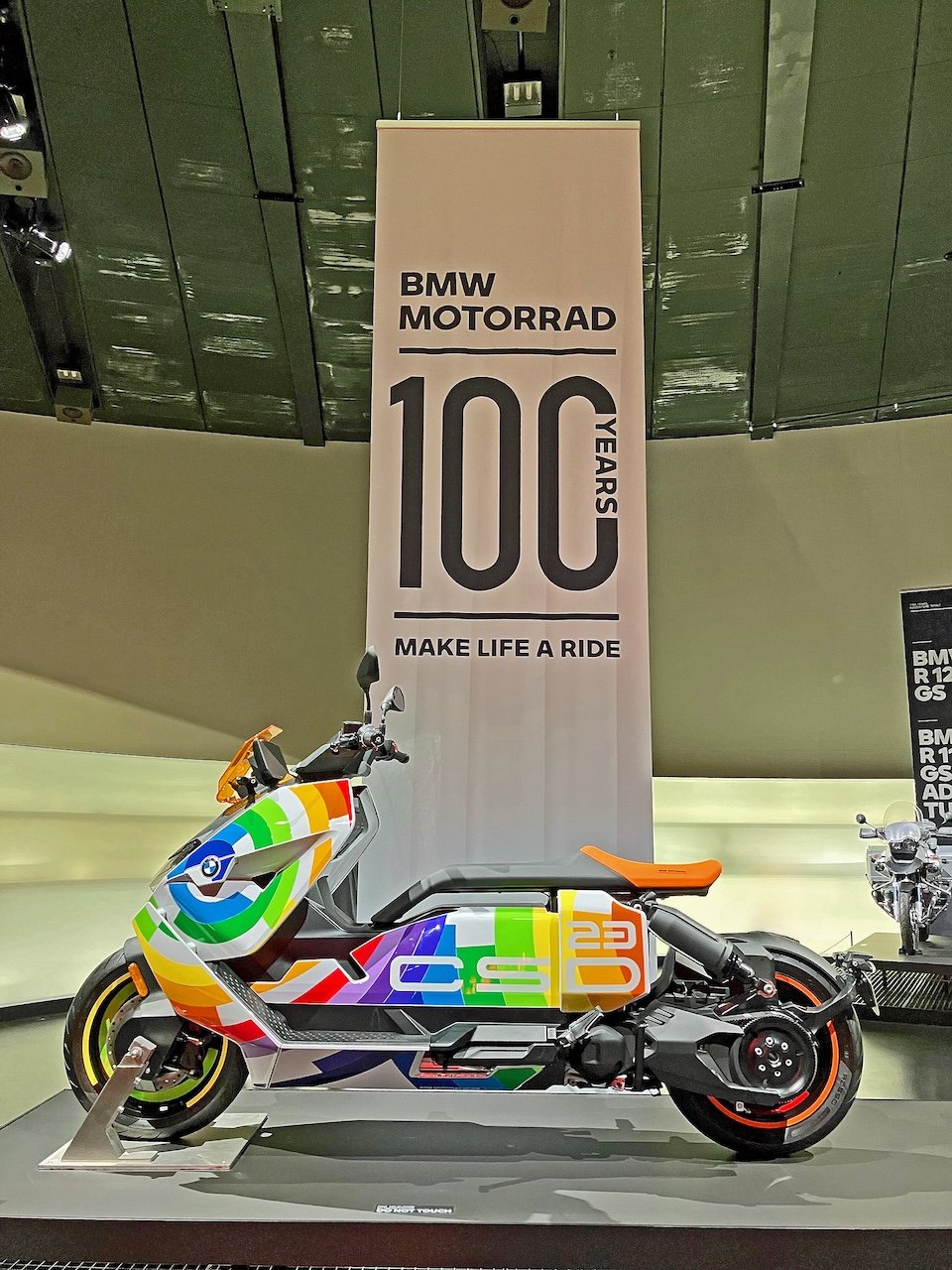
Don't Miss This: Munich City Pass (MegaPass)
Make the most of your time in Munich with the flexible and convenient Munich City Pass from MegaPass. This all-in-one sightseeing pass includes admission to must-see attractions like the Nymphenburg Palace, a guided walking tour of Munich's Old Town (Altstadt), internet data via eSIM, and a 24-hour hop-on hop-off bus tour which is the perfect way to explore the city at your own pace. You can also customize your pass by adding extra Munich attractions to suit your interests and itinerary. It is one of the best ways to save time and money while discovering the best things to do in Munich!
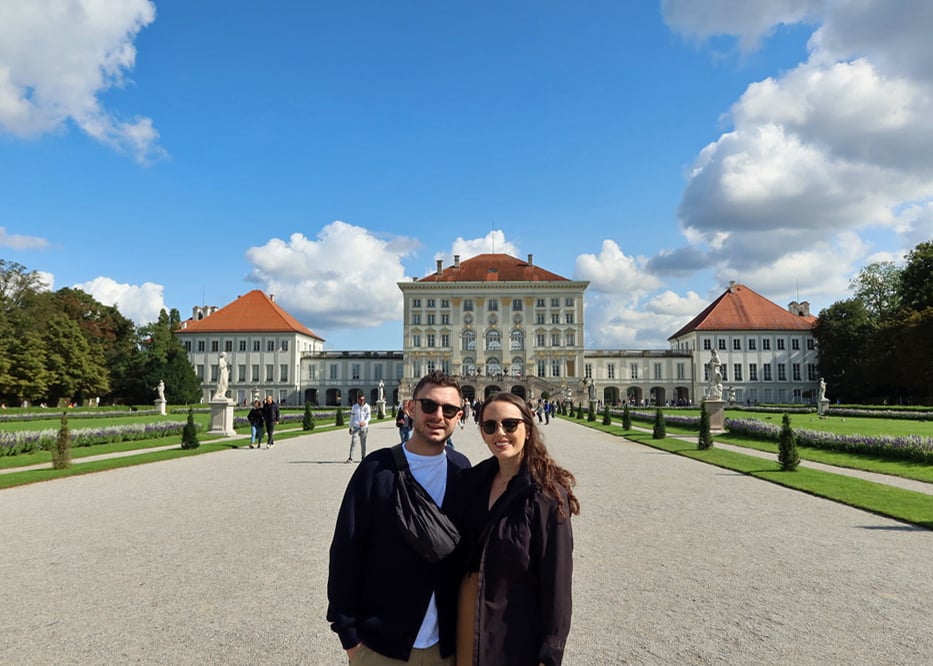
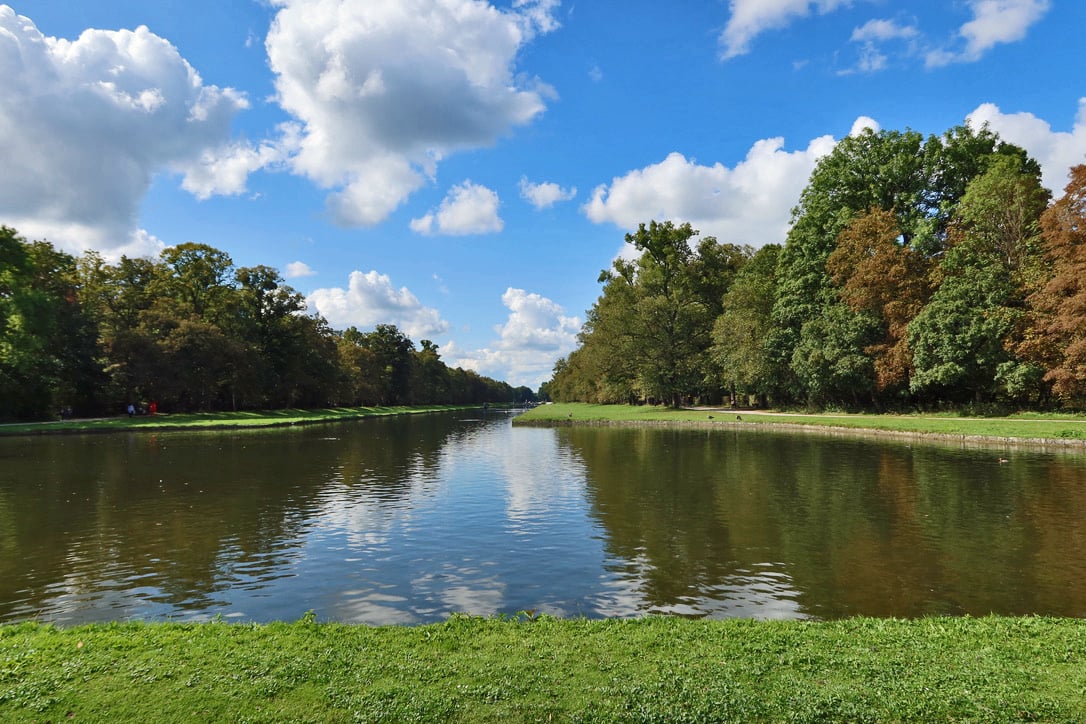
Why we loved Munich
Munich captivates with its vibrant blend of historic charm and cultural richness, offering an array of unforgettable experiences that had us enchanted at every turn. In fact, Munich is a city that Brian enjoyed so much that he has visited it twice! One of the aspects that captivated us most about Munich is its history, evident in the magnificent palaces and museums that dot the cityscape. Exploring the grandeur of places like Schloss Nymphenburg left us in awe, as it stands as one of the most beautiful palaces we've ever seen, with its stunning architecture and sprawling gardens offering a glimpse into Bavaria's royal heritage.
The museum scene in Munich is equally impressive, and we spent some phenomenal moments delving into art and history at places like the Alte Pinakothek. The museum's collection of iconic artworks, including Dürer's "Self-Portrait in a Fur Coat," Leonardo da Vinci's "Madonna with the Carnation," and Sandro Botticelli's "Lamentation over the Dead Christ," left us inspired and enriched by the masterpieces on display.
On a different note, the BMW Museum & BMW Welt was a thrilling experience, showcasing the evolution of automotive innovation and design. From vintage models to futuristic concepts, including Elvis Presley's recently restored BMW 507, the museum offered a fascinating journey through the world of BMW.
Getting around Munich was a breeze, thanks to its efficient public transportation system. Whether by tram, bus, or subway, we found it incredibly easy to navigate the city and reach all the places on our itinerary.
Of course, our visit coincided with Oktoberfest, an experience we won't soon forget. The festive atmosphere, lively beer tents, traditional Bavarian music, and, of course, the delicious food and beer made Oktoberfest an amazing celebration of Bavarian culture. It left us with unforgettable memories and a strong desire to return to Munich and relive the magic all over again!
Munich Neighborhoods
- Altstadt (Old Town)
- Maxvorstadt
- Ludwigsvorstadt & Isarvorstadt
- Olympiapark & Schwabing-Freimann
- Neuhausen-Nymphenburg
Altstadt (Old Town)
Altstadt, also known as the Old Town, is a historic and vibrant neighborhood located in the heart of Munich. It is one of Munich's most iconic and popular areas, known for its rich history, beautiful architecture, lively atmosphere, and numerous attractions. Marienplatz stands at the core of Altstadt, serving as the vibrant epicenter of this historic neighborhood. Marienplatz features the famous Glockenspiel, a charming clock tower with moving figures that perform a historical reenactment several times a day. Marienplatz is surrounded by historic buildings, cafes, shops, and is a focal point for events and gatherings.
Altstadt also boasts landmarks such as the Frauenkirche, an iconic cathedral (also known as the Cathedral of Our Dear Lady) and a symbol of Munich; Viktualienmarkt, a bustling outdoor market; Hofbräuhaus, the famed beer hall; and the grand Residenz Palace.
As for staying in Altstadt, it is an excellent choice for tourists due to its central location and proximity to major attractions. With easy access to public transportation, including the Marienplatz U-Bahn and S-Bahn stations, you can explore other parts of Munich conveniently. Additionally, the neighborhood's charm, historic ambiance, and abundance of amenities make it a desirable area for accommodations ranging from luxury hotels to budget-friendly options like guesthouses and hostels.
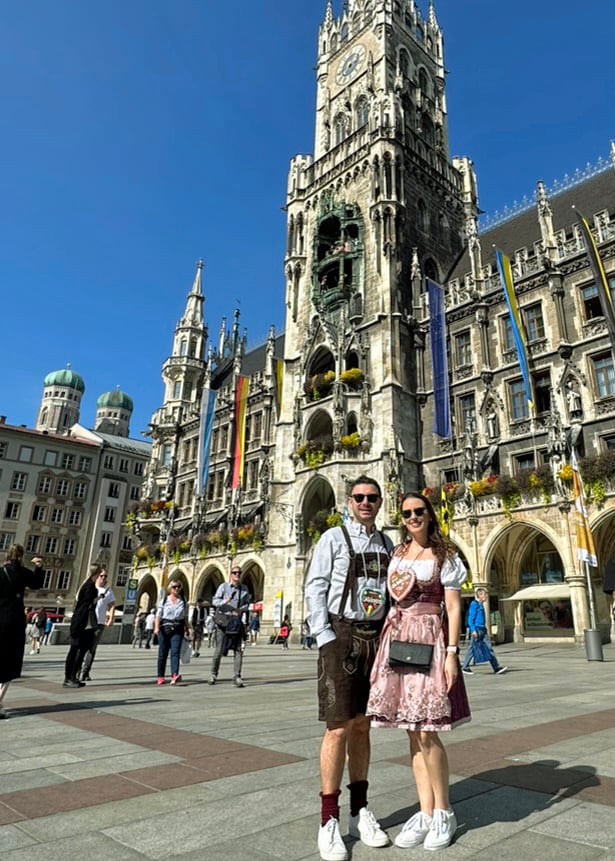
Maxvorstadt (The Art District)
Maxvorstadt is a vibrant and culturally rich neighborhood in Munich, known for its art, academic institutions, and historical landmarks. One of its most prominent attractions is the Kunstareal, or Art District, home to several world-class museums and galleries such as the Alte Pinakothek, Neue Pinakothek, and the Pinakothek der Moderne, showcasing a vast collection of art spanning centuries. Maxvorstadt is also renowned for its academic institutions, including the Ludwig Maximilian University of Munich (LMU) and the Technical University of Munich (TUM), contributing to a youthful and dynamic atmosphere with numerous cafes, bookstores, and cultural events. Additionally, the neighborhood features beautiful green spaces like the Englischer Garten (English Garden), one of the largest urban parks in the world, offering space for recreational activities and scenic landscapes. With its blend of cultural attractions and nearby location to Altstadt (Old Town), Maxvorstadt can be an excellent place to stay in Munich. It offers convenient access to public transportation, a range of accommodation options, and opportunities to immerse oneself in art and history, while exploring the city.
Simply Munich: Maxvorstadt >
Best Restaurants in Maxvorstadt & Schwabing >
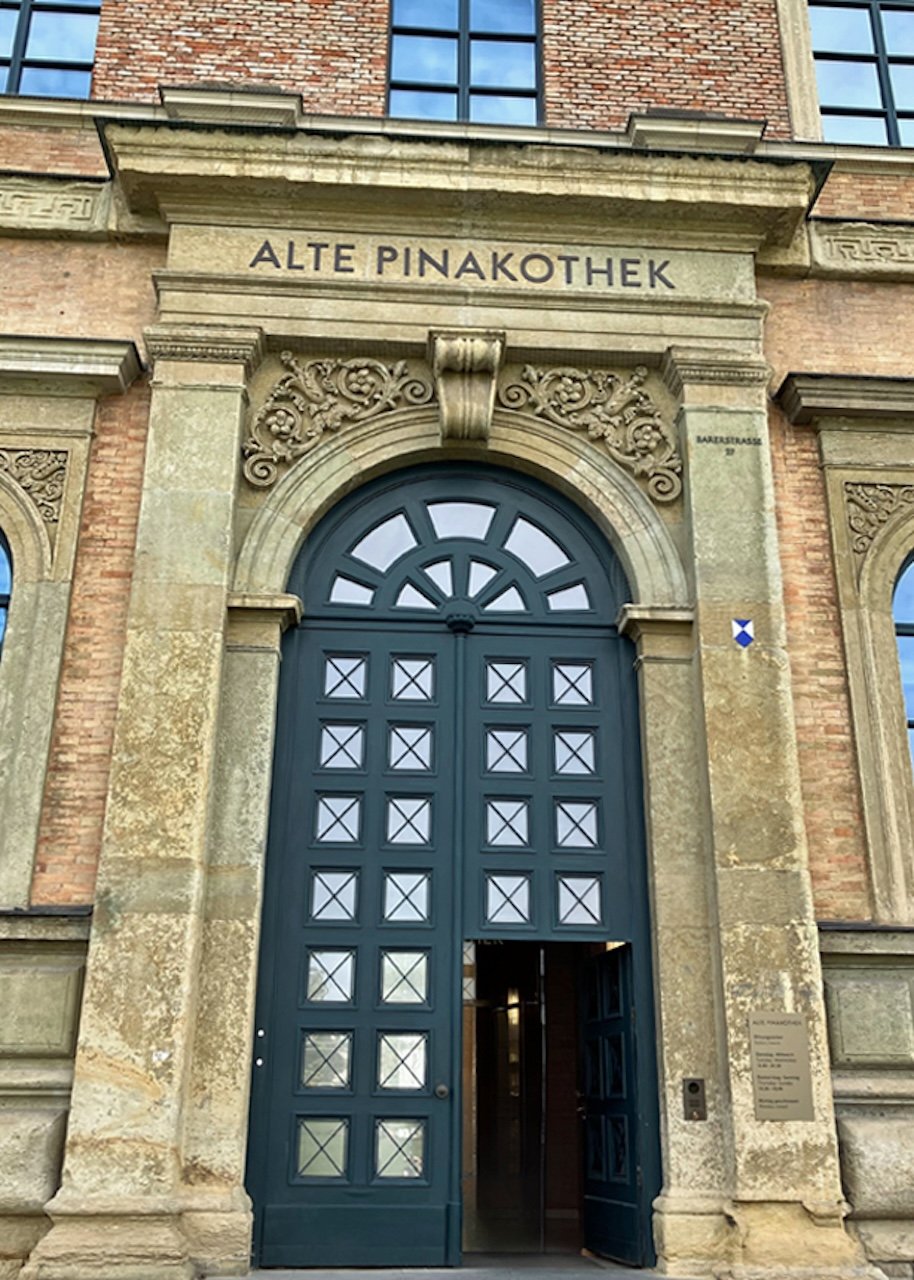
Ludwigsvorstadt & Isarvorstadt
Ludwigsvorstadt and Isarvorstadt are two neighboring districts in Munich known for their vibrant atmosphere, diverse cultural scene, and central location. Often referred to simply as "Ludwigsvorstadt-Isarvorstadt," is located just south of Munich's city center. Both districts are well-connected by public transportation, including U-Bahn and tram lines, making it easy for visitors to explore other parts of Munich.
Ludwigsvorstadt
Ludwigsvorstadt is known for its central location and diverse cultural scene. It is home to the city's main train station, München Hauptbahnhof (München Hbf), making it a transportation hub and a convenient area for travelers. The neighborhood is also home to the famous Theresienwiese, where the annual Oktoberfest takes place, attracting millions of visitors from around the world to enjoy Bavarian traditions, beer, and festivities. Additionally, the neighborhood features the historic St. Paul's Church (Paulskirche) and the Deutsches Theater, one of Munich's major cultural venues hosting theatrical performances, concerts, and events.
A wide array of accommodations, spanning various budgets, surrounds München Hbf. Though the Ludwigsvorstadt neighborhood may not win awards for its beauty or charm, it stands out as an excellent choice for travelers seeking affordable lodging options with the convenience of close proximity to public transport. Moreover, you'll find more lodging options near Theresienwiese. Yet, it's essential to note that these properties are among the quickest to fill during Oktoberfest, owing to their close location to the heart of the festivities.
Isarvorstadt
Isarvorstadt is known for its trendy vibe, artistic flair, and diverse dining scene. The Glockenbachviertel, a part of Isarvorstadt, is particularly popular for its lively nightlife, eclectic mix of bars, cafes, and boutiques, and its LGBTQ+ friendly atmosphere. Visitors can explore the vibrant streets, discover street art, and enjoy a wide range of cuisines from traditional Bavarian dishes to international flavors.
With excellent accessibility through public transportation and a variety of accommodation options to suit different preferences and budgets, Isarvorstadt stands out as a fantastic choice for visitors looking to explore Munich.
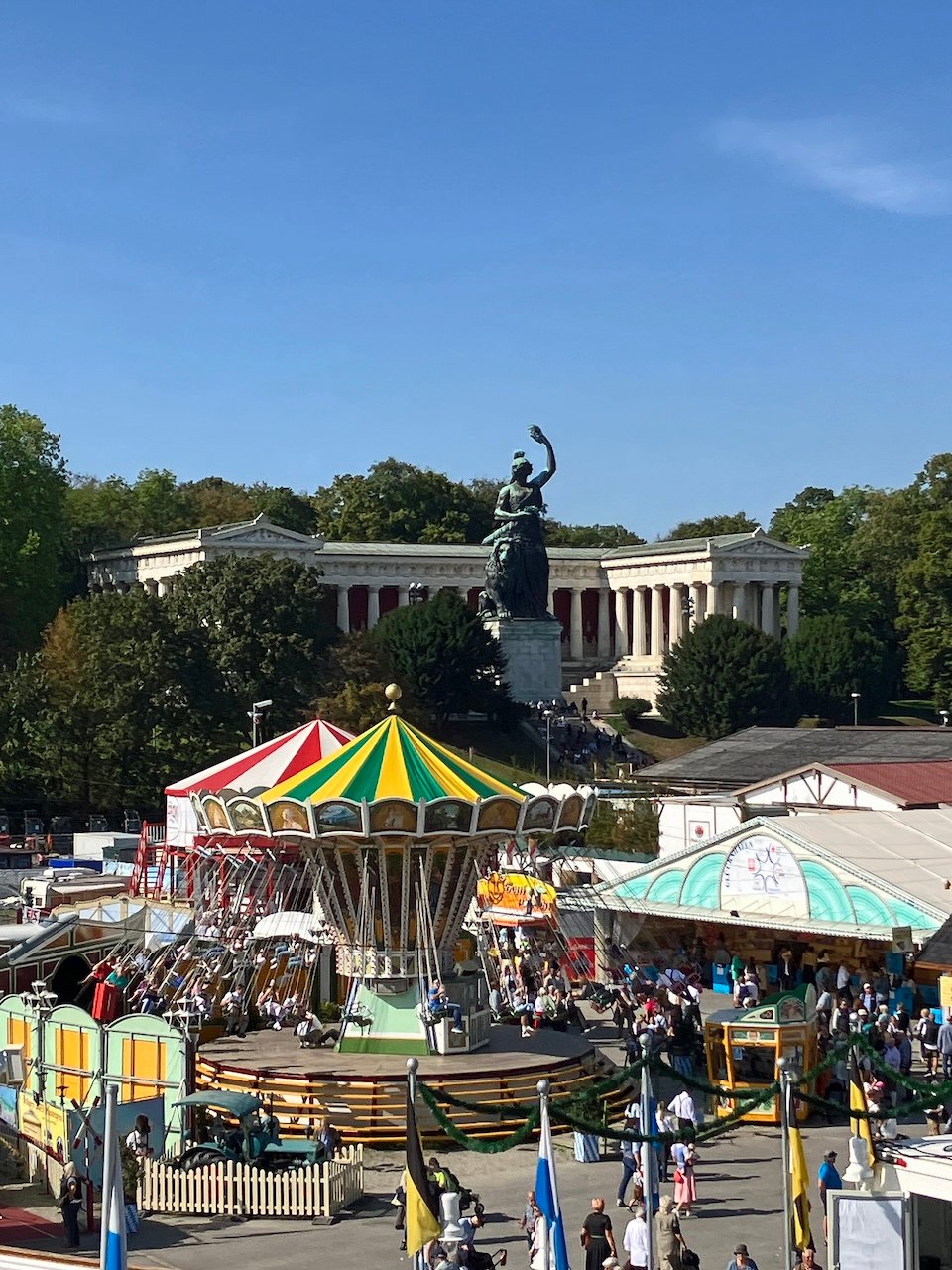
Olympiapark & Schwabing-Freimann
While Olympiapark and Schwabing-Freimann may not be as centrally located as some other neighborhoods in Munich, they offer a unique blend of sports, culture, and outdoor experiences. It is a great place to visit for sports enthusiasts, nature lovers, and anyone interested in exploring Munich beyond its traditional attractions.
Olympiapark
The Olympiapark neighborhood in Munich is renowned for its iconic Olympic Park, which was built for the 1972 Summer Olympics. The park is a sprawling green space that includes various facilities and attractions. One of the most recognizable features is the Olympic Stadium, known for its striking tent-like roof structure. Visitors can explore the stadium, which hosts sports events, concerts, and other performances. The Olympiahalle, an indoor arena within the park, also hosts concerts, sports competitions, and exhibitions.
Aside from sports facilities, Olympiapark offers recreational activities such as boating on the Olympic Lake, cycling, and picnicking in the vast green spaces. The park's landscaped gardens, water features, and scenic views of Munich's skyline make it a popular destination for both locals and tourists.
Olympic Park (Olympiapark) Guide >
Restaurants near Olympiapark >
Schwabing-Freimann
Adjacent to Olympiapark is Schwabing-Freimann, home to the BMW Welt and BMW Museum. Visitors can explore exhibits, learn about BMW's engineering prowess, and even see the latest BMW models on display.
Another one of the main attractions in Schwabing-Freimann is the Englischer Garten (English Garden), one of the largest urban parks in the world. Visitors can enjoy peaceful walks, picnics by the streams, or even surf on the Eisbach wave, a popular spot for river surfing within the park.
Schwabing-Freimann is also home to Allianz Arena, which is the stadium of FC Bayern Munich and TSV 1860 Munich football clubs. The stadium is easily accessible by public transportation, including the U-Bahn (subway) system, making it convenient for fans and visitors not staying in the neighborhood to attend matches and events.
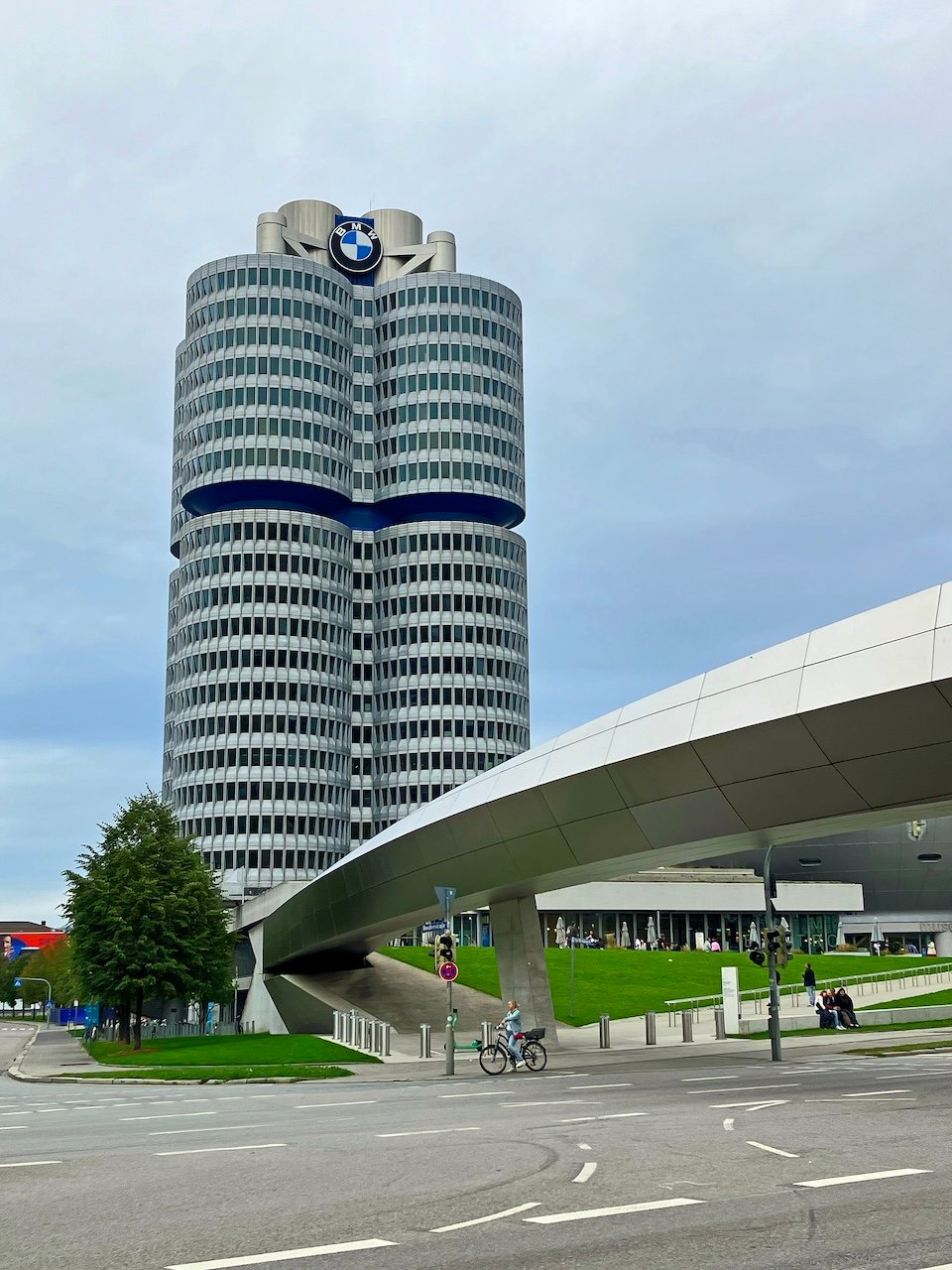
Neuhausen-Nymphenburg
Neuhausen-Nymphenburg in Munich is known for the magnificent Schloss Nymphenburg (Nymphenburg Palace), surrounded by extensive gardens, and the Marstallmuseum with royal carriages. Visitors also enjoy the tranquil Munich Botanical Garden and the Museum Mensch und Natur for natural history exhibits. The neighborhood offers a vibrant cultural scene with theaters, galleries, and charming cafes, along with picturesque parks like Westpark for leisure and outdoor activities.
Although it may not boast the central location of Munich's other districts, Neuhausen-Nymphenburg is readily accessible via public transit, making it an ideal choice for visitors seeking the serenity of a quiet neighborhood without straying too far from the heart of the city.
Expedia's Neuhausen-Nymphenburg Guide >
Restaurants near Nymphenburg Palace >

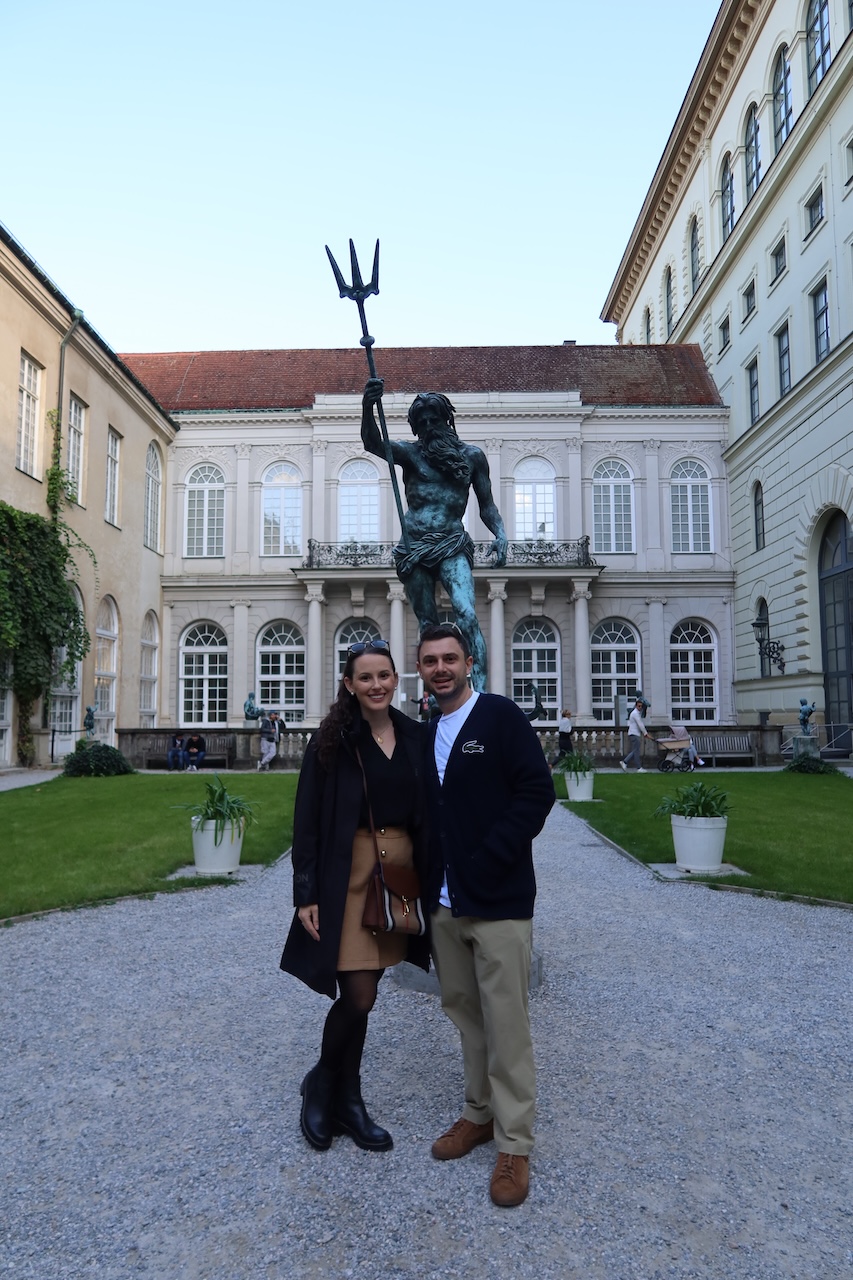
Our Take on Munich
During our time in Munich, we had the pleasure of staying in three different hotels, each offering a unique and memorable experience that we would highly recommend to our fellow Jetsetters. Our favorite among them was Hotel Torbräu, conveniently located near the Sendlinger Tor. The hotel's proximity to Marienplatz made exploring the city's attractions effortless, and the hotel's cozy atmosphere and attentive service left a lasting impression.
Another excellent choice is the Platzl Hotel, situated directly across from the famous Hofbräuhaus. This location provided easy access to Munich's lively beer culture and historic sites. Though this hotel comes with a higher price tag, it delivers an unparalleled level of comfort and luxury.
For our last night in Munich before an early flight home, we opted to stay at the Eden Hotel Wolff, located across the street from München Hauptbahnhof (Munich Hbf Central Station). This hotel pleasantly surprised us with its spacious rooms, which were exceptionally large even by American standards. The overall comfort and amenities exceeded our expectations. The strategic location near the central station was ideal for our early morning departure, allowing us to access transit options seamlessly and ensuring a stress-free journey to the airport.
Overall, our experiences at these three hotels contributed significantly to our enjoyable stay in Munich, and we would gladly return to any of them in the future.
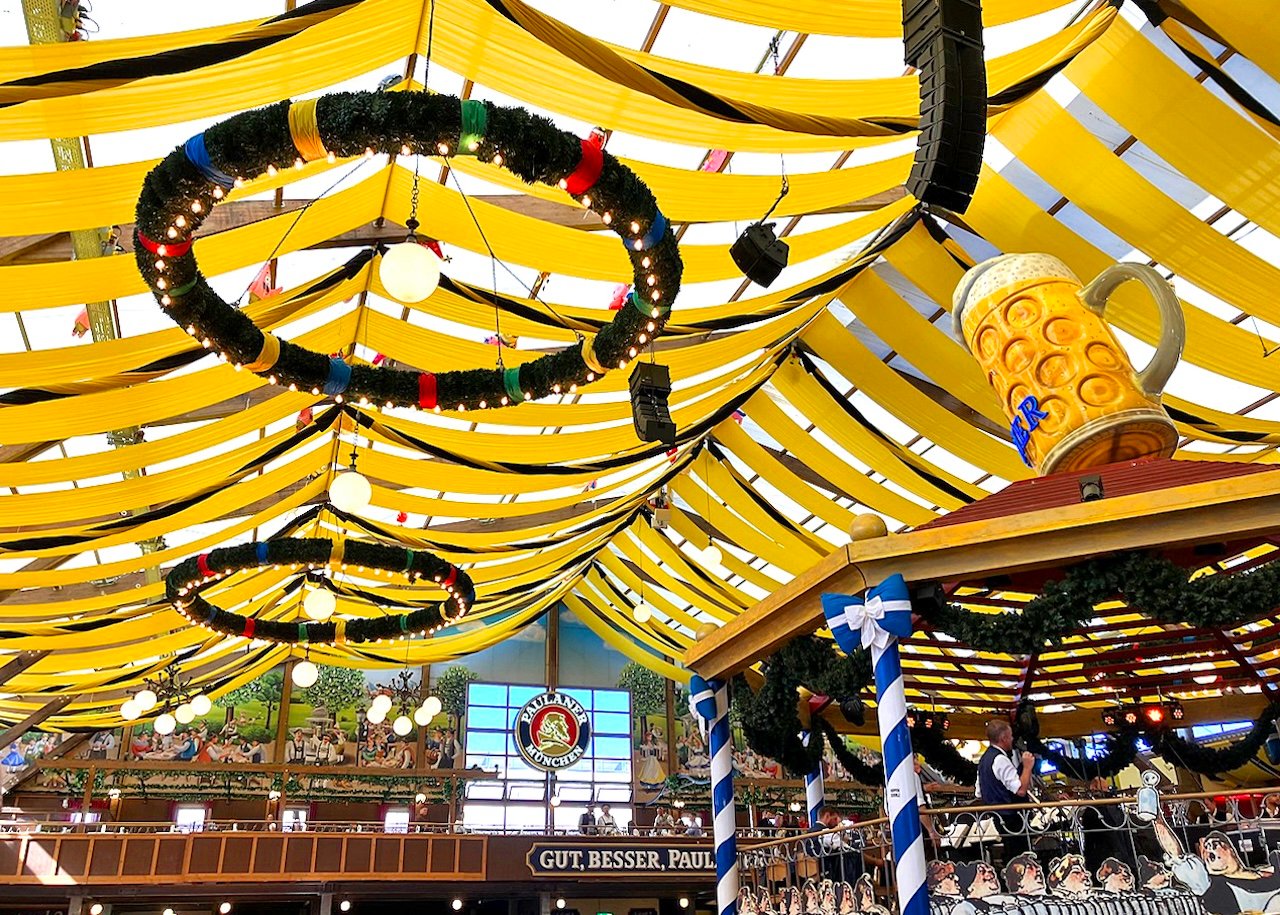
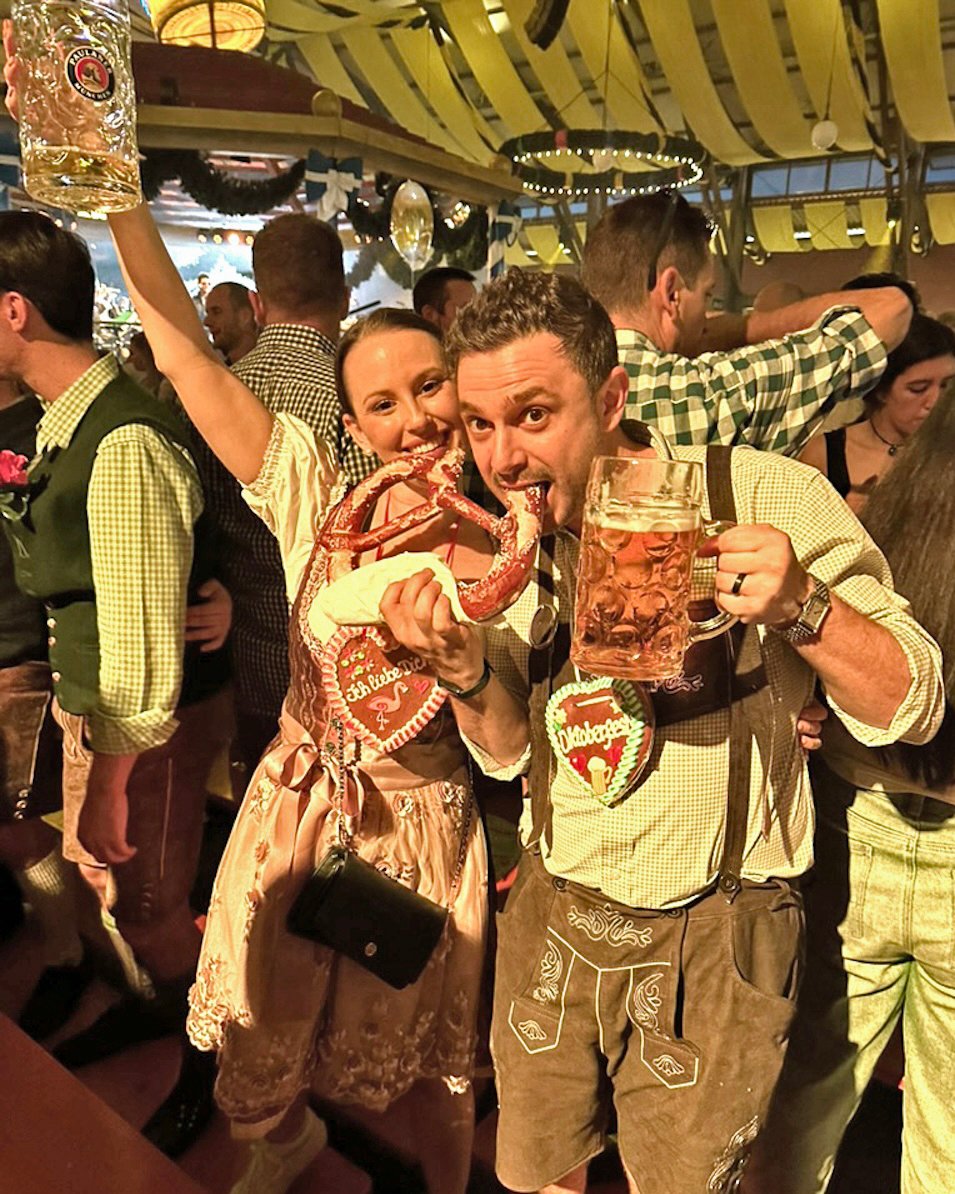
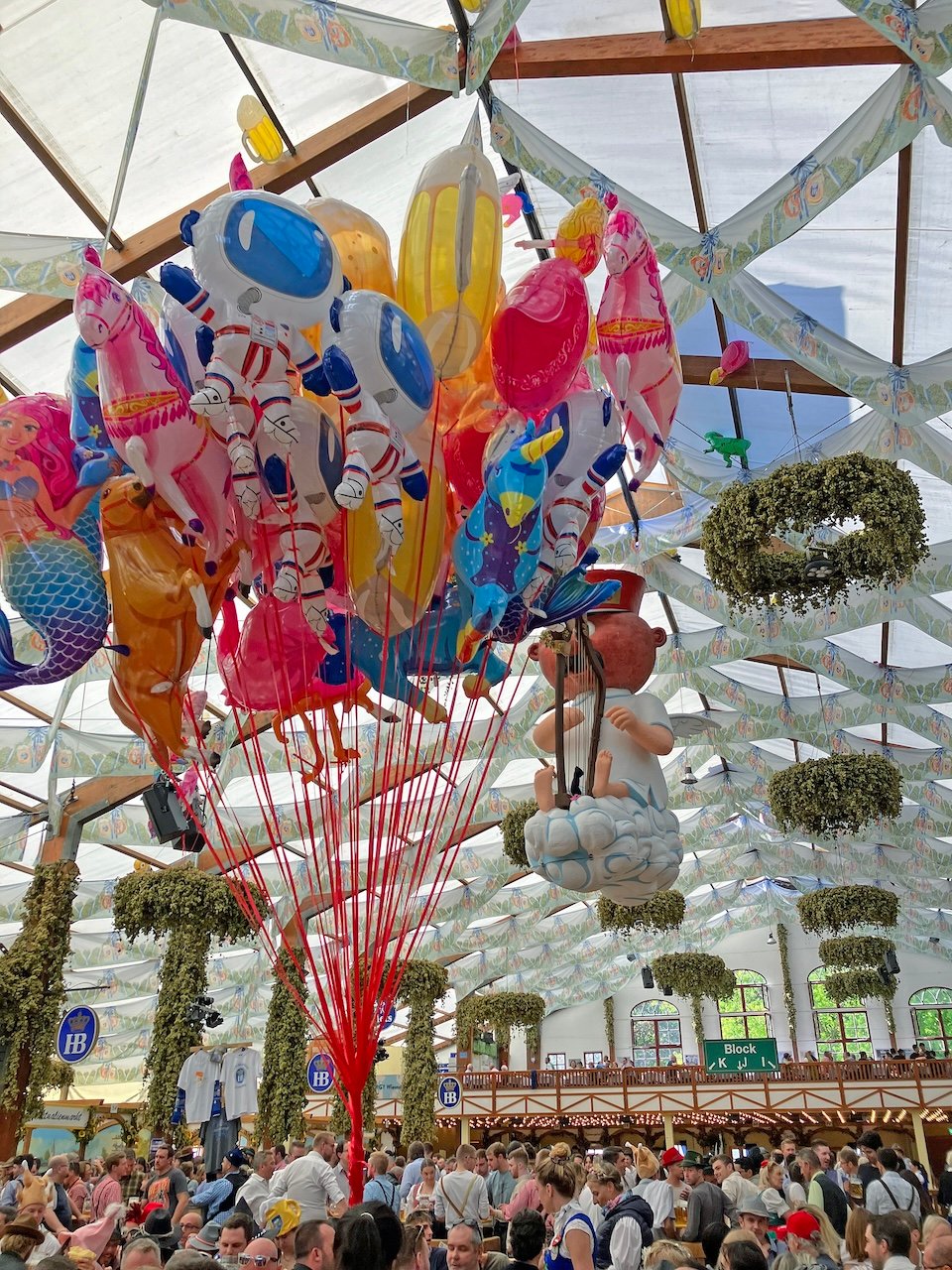
A Deep Dive: Oktoberfest Munich
The next Oktoberfest is scheduled to take place from Saturday, September 19 to Sunday, October 4, 2026.
Oktoberfest Munich, famously known as Wiesn among the locals, is the world's largest and most iconic beer festival. It traces its origins back to October 12, 1810, when Crown Prince Ludwig (later King Ludwig I) of Bavaria married Princess Therese of Saxony-Hildburghausen. To celebrate the royal wedding, the entire city was invited to join in the festivities held outside the city gates on the field, also known as Wiesen in German. This field eventually became known as Theresienwiese, or "Theresa's Meadow," in honor of Princess Therese. The locals enjoyed the wedding celebrations so much that they were hosted again in 1811. Over the subsequent years, this annual event evolved into what we now recognize as Oktoberfest.
Today, Oktoberfest is a grand celebration of Bavarian culture, featuring traditional music, clothing (Trachten), food, and, of course, plenty of beer. There are also carnival rides and games, making it a family-friendly affair! Despite its name, Oktoberfest typically runs for about 16-18 days, starting in September and extending into the first weekend of October. Visitors from around the globe flock to Munich to partake in the festivities, with millions of people attending each year.
At Oktoberfest, visitors can expect to see locals and tourists alike dressed in traditional Bavarian clothing, called Trachten in German, including Lederhosen for men and Dirndls for women. Oktoberfest hosts 17 large beer tents and 21 small tents, each representing different breweries in Bavaria, offering beers specially brewed for Oktoberfest, along with Bavarian cuisine such as pretzels, sausages, and roast chicken. The atmosphere is lively and cheerful, with attendees joining in on the dancing, singing, and merrymaking that defines the festivities.
To make the most out of your Oktoberfest experience, take note of the essential advice we've outlined here. For a deeper dive into making your visit unforgettable, check out our Ultimate Guide to Oktoberfest Munich on the Jetset Seeker Blog.
- The beer tents are cash-only, so ensure you have enough cash for purchases. The beer and food at Oktoberfest does not come cheap, with the average price for a liter of beer around €15.
- To avoid the largest crowds, consider visiting Oktoberfest on weekdays in the late morning or early afternoon. We attended on a Monday and Tuesday and while still busy, the crowds were tolerable and we were easily able to hop between beer tents!
- For those planning to attend Oktoberfest with a large group, reservations for the beer tents are recommended. A reservation is for an entire table, which typically seats between 8-10 adults. Reservations have to be made with each individual beer tent, in advance, and require payment. More information about reservations can be found on Oktoberfest Munich website.
For more information on planning your trip to Oktoberfest, as well as what to wear, be sure to check out two of our blogs: Ultimate Guide to Oktoberfest Munich: Trip Planning Tips & More and Oktoberfest Outfits: What to Wear to Oktoberfest in Munich, Germany. Prost! 🍻
Munich Travel Guide: Additional Trip Planning Resources
-

Ultimate Guide to
Oktoberfest Munich:
Trip Planning
Tips & More
-

Top Five Must-See Attractions
& Museums in Munich
-

Oktoberfest Outfits:
What to Wear toOktoberfest in
Munich, Germany
-

The Ultimate Visitor's
Guide to Munich
Nymphenburg Palace
-

Visit Munich Residenz:
Tickets, Travel Tips,
& History
-

Fun & Surprising Facts
About Oktoberfest
-

3 Days in Munich:
The Perfect Itinerary for
First-Time Visitors
Munich Day Trips

Neuschwanstein Castle
Nearby Destinations
Looking for more Munich content?
Check out the Jetset Seeker Blog!
Our Munich Travel Guide & Trip Planning Resources
Curious about the resources that shaped our Munich trip? Dive into the links below for additional insights and valuable information we used to plan our own unforgettable trip.
- Rick Steves Pocket Munich & Salzburg (2nd Edition, 2019) >
- Tripadvisor Things to Do in Munich >
- My Wanderlusty Life Blog - Oktoberfest >
- CNTraveler - Munich >
Looking for more information on Germany? From when to visit, popular souvenirs, train information, and more, check out our Germany Travel Guide, linked below.
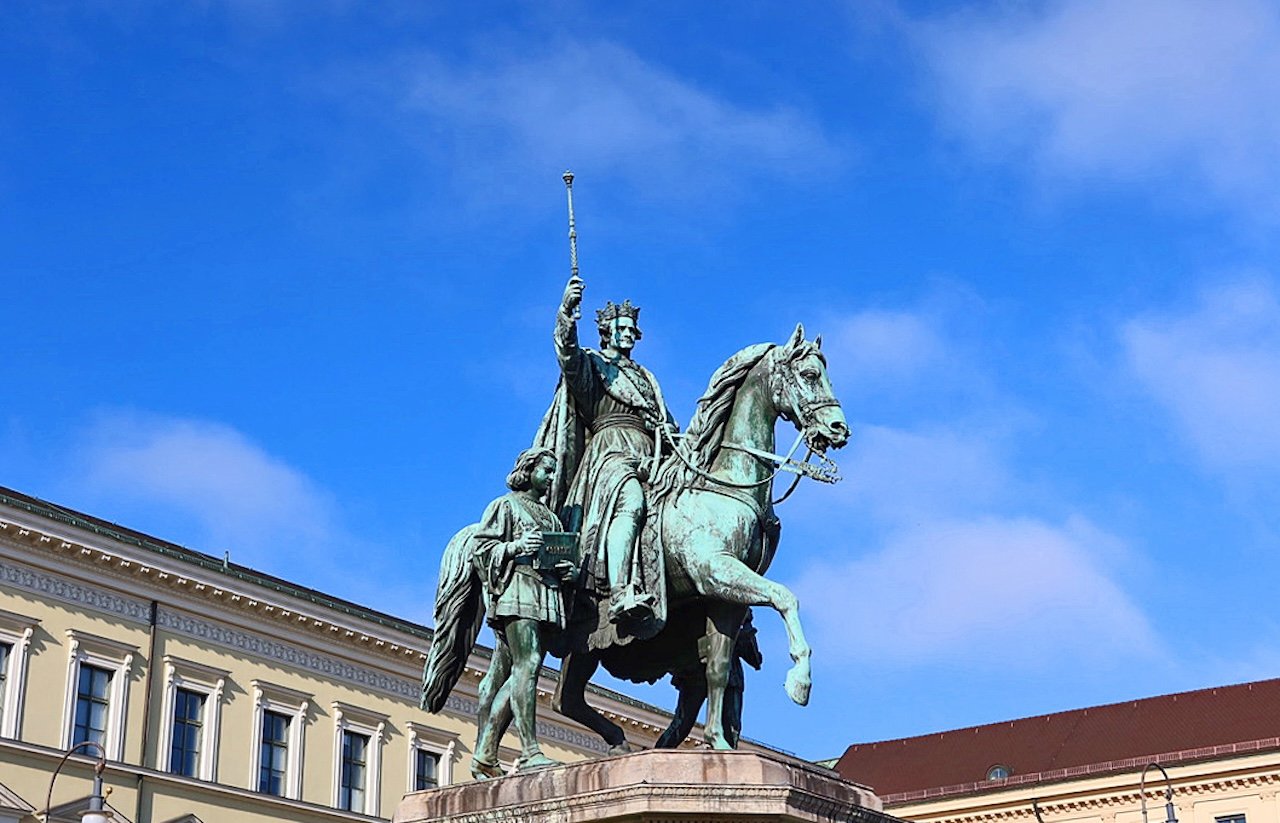
Tokyo Itineraries

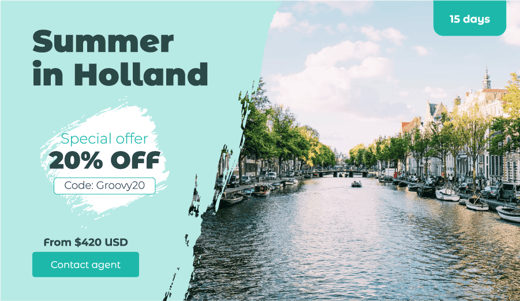
%20(1).png?width=3690&height=2079&name=Jetset%20Seeker%20Logo%20(Banner)%20(1).png)
